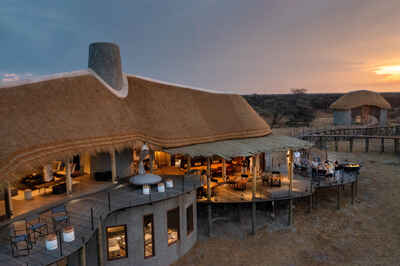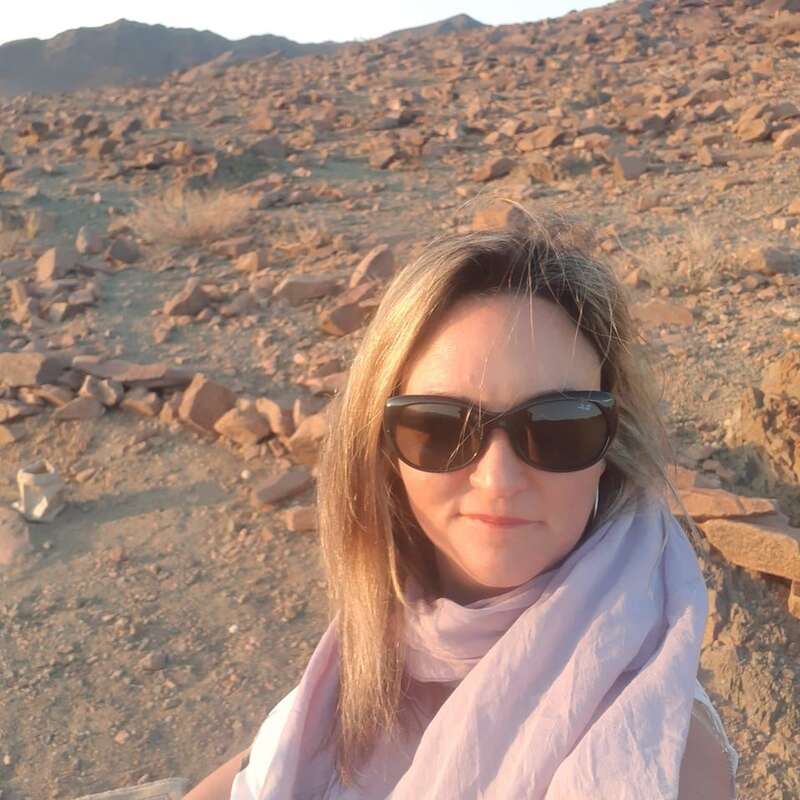About Onguma Camp Kala
Relax in luxury and be lulled to sleep among the tree tops at Onguma Camp Kala.
And in case that’s not adventurous enough, your bedroom can be left entirely open to one side, with the sights and the sounds of the bush all around.
Watch the comings and goings at the floodlit waterhole from your balcony, or even from the open-air shower: at Camp Kala, the antelope, giraffe, zebra and more that come to drink are rarely out of your sight – and nor is the occasional predator.
In the hub of the camp you’ll find a comfortable lounge with a warming stove and a help-yourself bar. Chat with the chefs in the open-plan kitchen while they prepare your meal, or head for the cosy firepit where guests – never more than eight – gather to discuss the day’s adventures (though still with a watchful eye on the waterhole, of course).
So come for the wildlife – both in the private Onguma Reserve and in Namibia’s renowned magnet for wildlife, Etosha National Park. Come for the intimacy and the shared experience. But above all, come for the feel of the bush and a real sense of the wilderness.
Our view
Although not as luxurious as some of the other options on the Onguma Reserve, Onguma Tree Top Camp is one of our favourite. The remote location, excellent service and wonderful bush feel should attract those with a sense of adventure who want to get a little closer to the wilderness. And the peace and privacy make it a great spot for a group of friends or a family, not least as the whole camp can be booked on a private basis.
Accommodation
4 tents
Children
Best for 16+
Open
All year
Activities

4WD Safari

Birdwatching

Guided walking safari

Private activities
Traveller reviews of Onguma Camp Kala
43 real, un-edited reviews from Expert Africa's travellers.
Arrived 14 Apr 2023, 4 nights
"Onguma Camp Kala review"
Overall rating: Excellent
Arrived 31 Jan 2020, 1 nights
"Fun Camp in the Trees"
Overall rating: Excellent
Arrived 15 Sep 2019, 2 nights
"Onguma Tree Top Camp review"
Overall rating: Excellent
Arrived 24 Aug 2019, 2 nights
"Onguma Tree Top Camp review"
Overall rating: Excellent
Arrived 4 Aug 2019, 2 nights
"Wonderful stay at Onguma Tree top camp"
Overall rating: Excellent
Arrived 14 Jul 2019, 2 nights
"Tree top camp wonderful "
Overall rating: Excellent
Arrived 29 Mar 2019, 2 nights
"Onguma Tree Top Camp review"
Overall rating: Good
Arrived 24 Jan 2019, 3 nights
"Rustic Lodge overlooking a waterhole"
Overall rating: Excellent
Arrived 25 Nov 2018, 3 nights
"Still a wonderful camp"
Overall rating: Excellent
Arrived 6 Oct 2018, 2 nights
"Another amazing place"
Overall rating: Excellent
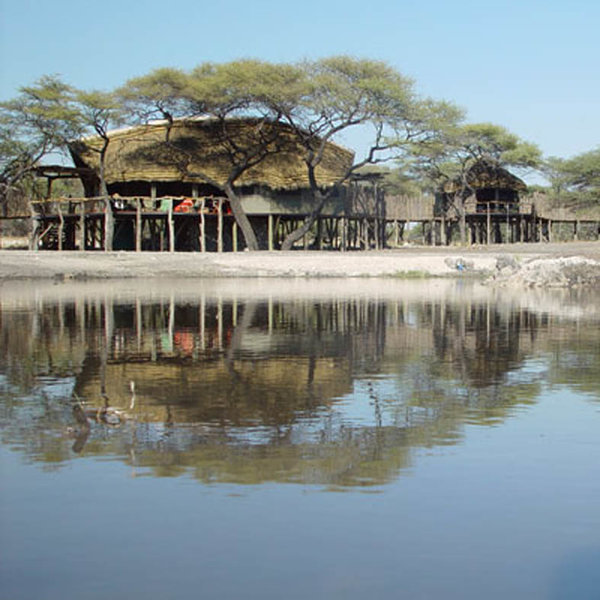
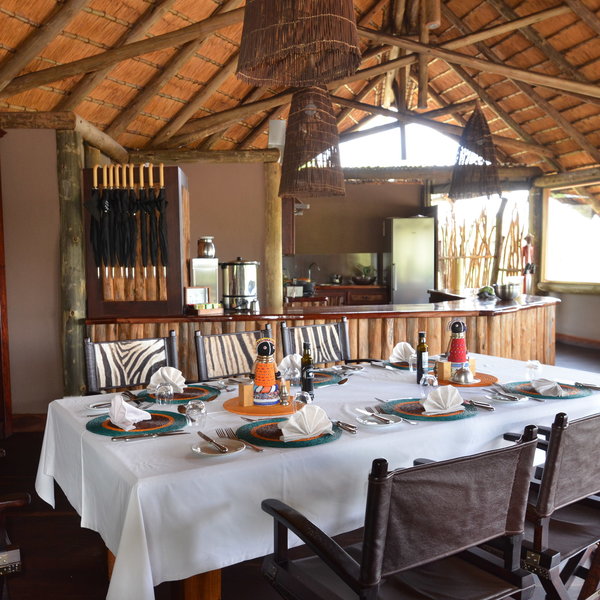
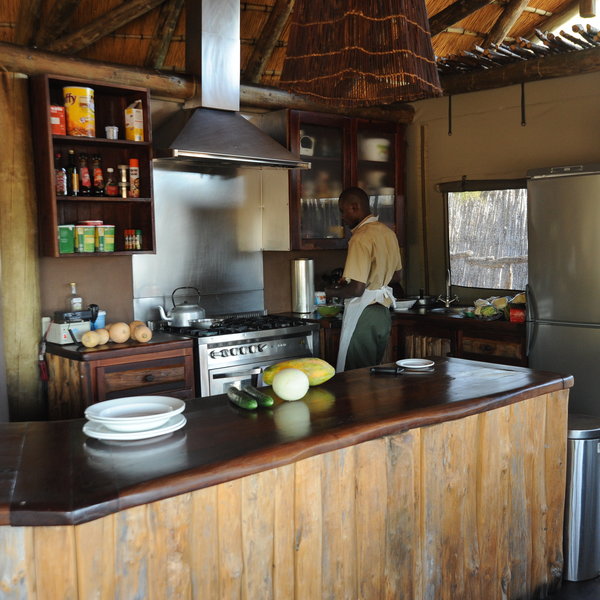
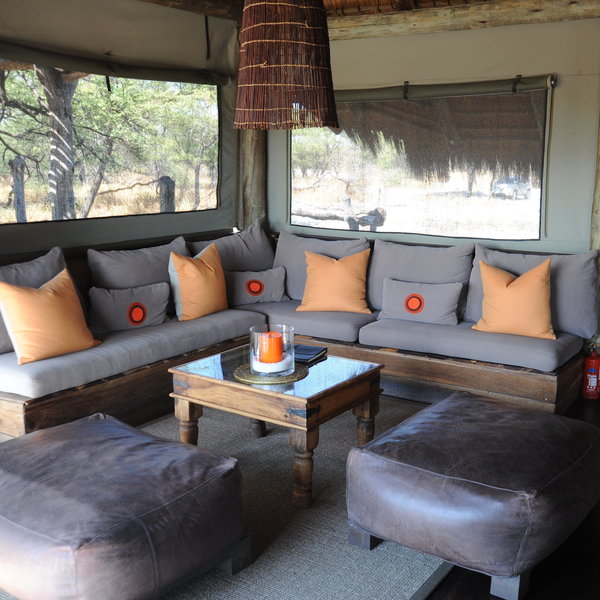
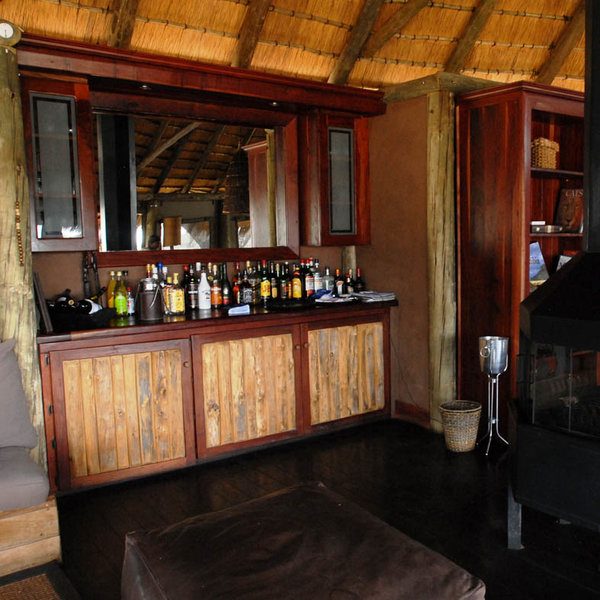
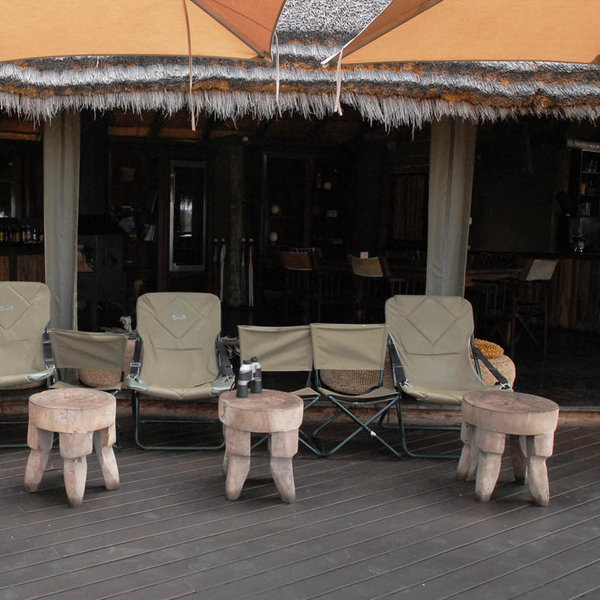
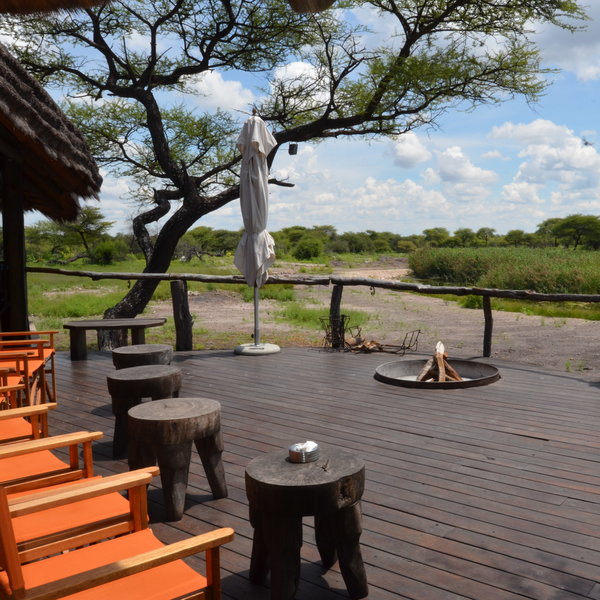
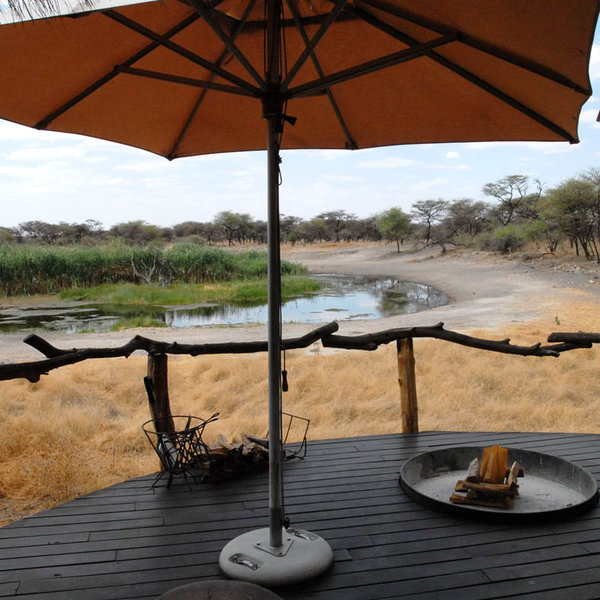
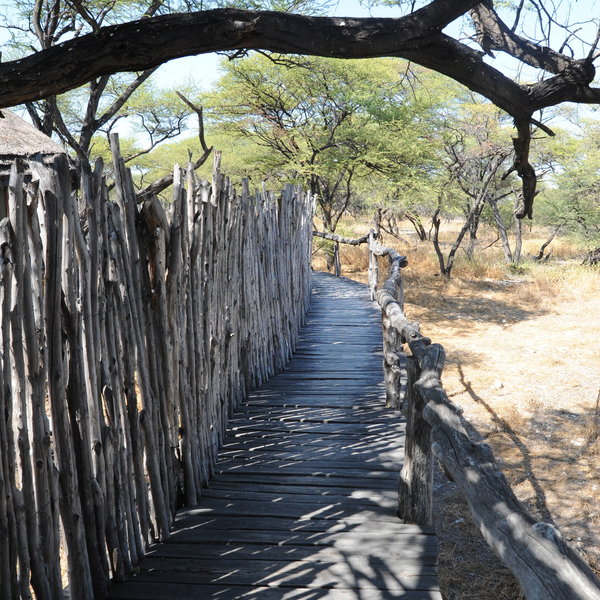
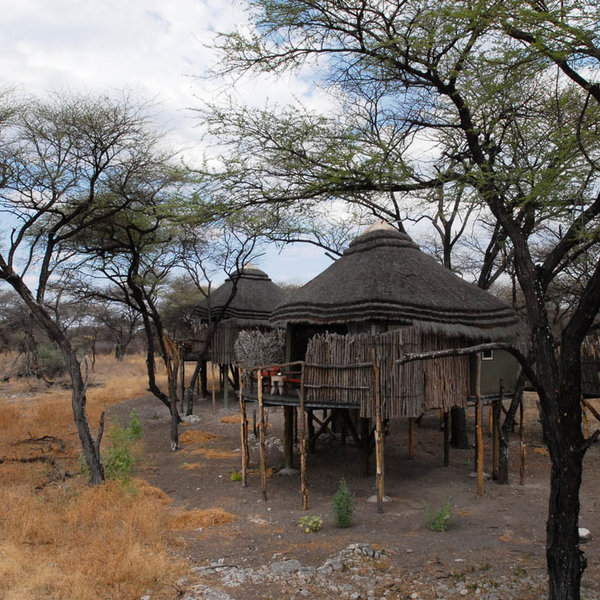
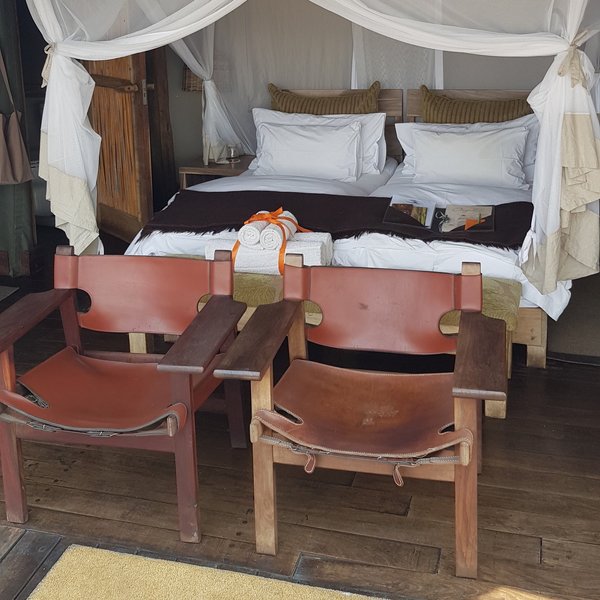
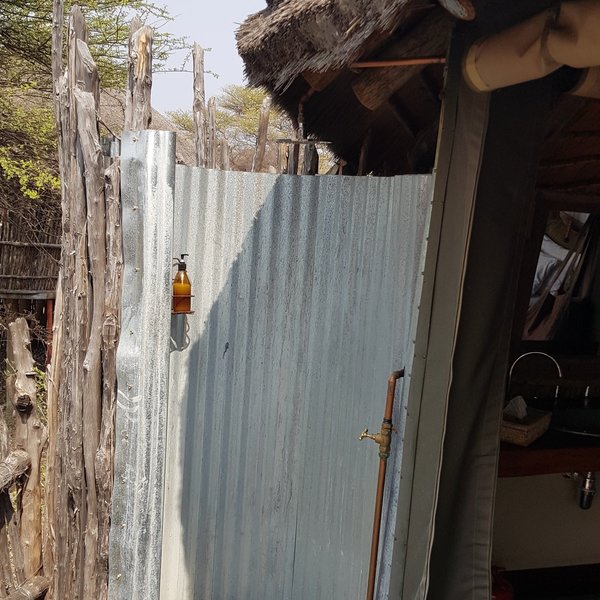
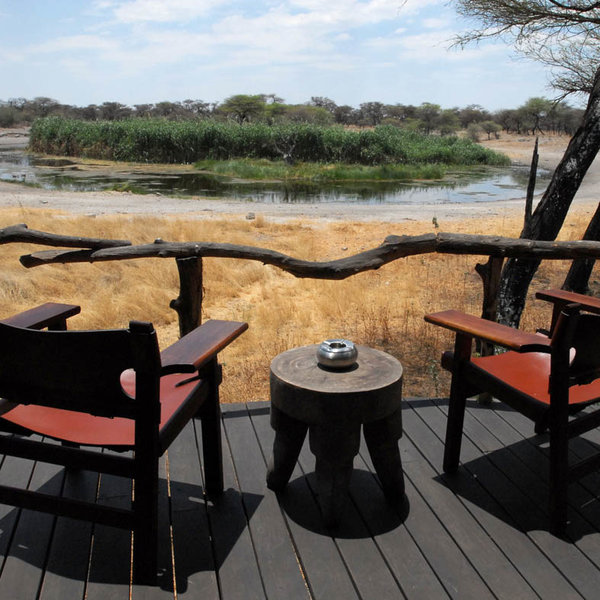
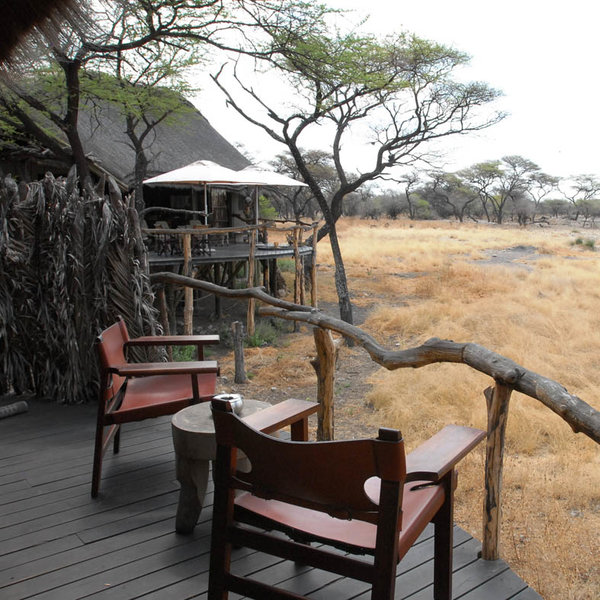
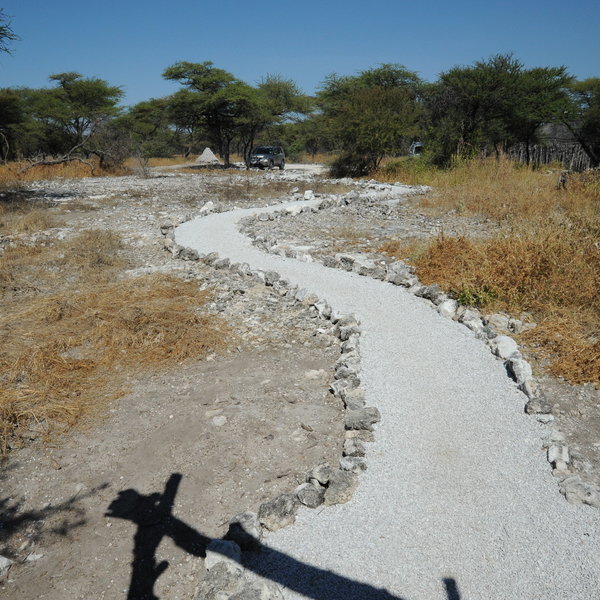
Expert Africa's gallery
When we travel we take lots of photos ourselves to give you a real and un-edited view of the safaris. See our 43 pictures of Onguma Camp Kala to get the candid view.
View gallerySafaris visiting Onguma Camp Kala
Just ideas, we'll always tailor-make a trip for you
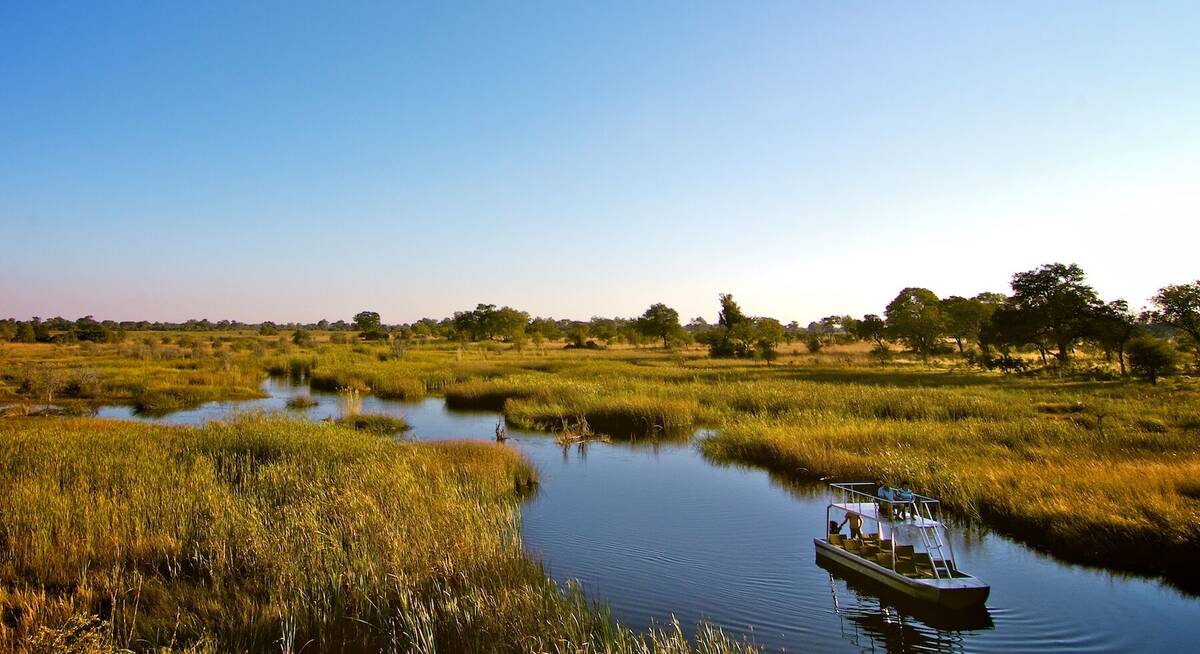
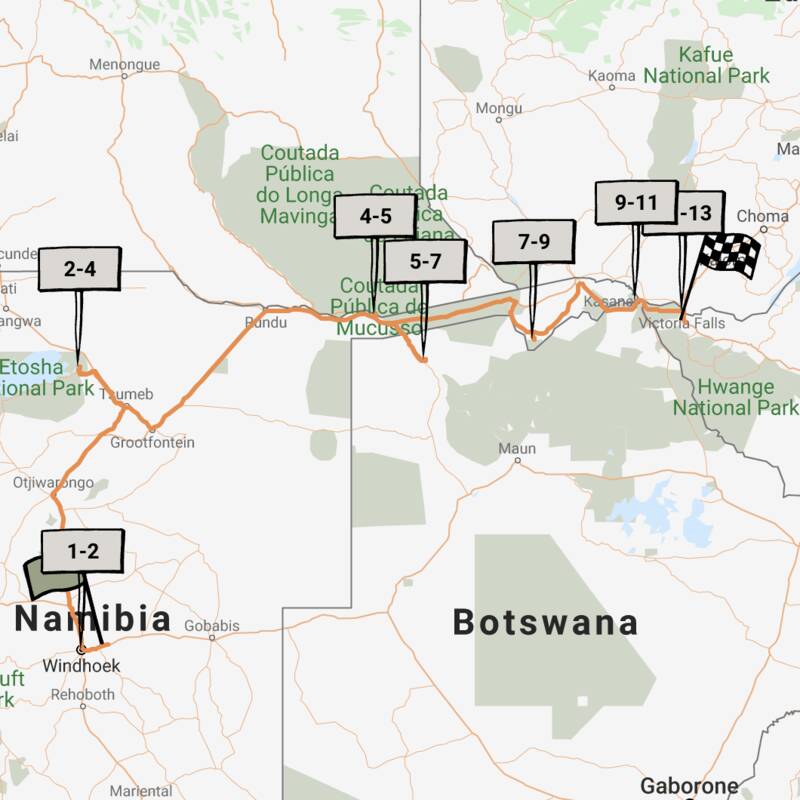
Sable Self-drive Safari
12 days • 7 locations • 3 country
WINDHOEK AIRPORT TO VICTORIA FALLS AIRPORT
A great-value southern African self-drive adventure from Namibia along the Caprivi Strip to Botswana and Zimbabwe, combining other-worldly landscapes, unforgettable wildlife spectacles and rarely visited places, and ending at Victoria Falls.
Visiting Etosha, Chobe and 4 other areas
US$9,450 - US$9,450 per person
Onguma Camp Kala: Our full report
Situated on the private Onguma Reserve bordering Etosha National Park, Onguma Camp Kala, formerly known as ...
... Tree Top Camp, is in an ideal location for visiting Namibia's flagship wildlife park. The camp is small and intimate, with only four tents, each raised on stilts within the tree line overlooking a large waterhole, giving the property a real bushcamp feel.
Onguma Tree Top burnt down and has been reimagined as Onguma Camp Kala which is due to open in late 2022. The new camp will not only be the most remote camp on the 340km2 Onguma Reserve, which it shares with its four sister camps: Onguma Bush Camp , Onguma Tented Camp , Onguma The Fort and Onguma Etosha Aoba .
We have not visited Camp Kala yet so the informaiton below is for the old Tree Top Camp.
Tree Top has just four tented rooms, each overlooking the floodlit waterhole in front of camp for their high vantage points. Raised on stilts and constructed from canvas under a thatched roof, these rooms can be left open at the front for a real wilderness feel. To keep inclement weather at bay but enabling you to still enjoy the view, a transparent plastic screen can be rolled down and for complete privacy the full canvas front can be lowered and secured. The cosy rooms, being raised high above the ground, mean keeping the front open at night, as we did on our last visit in September 2018, is a great way to hear the sounds of the bush and really experience the wilderness safely.
The décor is inspired by nature, with browns and greens balanced by fresh white linen. The bed is surrounded by a mosquito net, and a set of shelves houses a safe, hairdryer, mosquito repellent and a dressing gown and slippers.
The en-suite bathroom forms part of the bedroom, with a basin to the side of the bed, and the toilet behind a door in one corner. Just outside on the deck, a well-screened open-air shower offers complete privacy from the other tents, although less so from the bedroom.
Each room has a private balcony where a couple of leather chairs look out towards the waterhole. This is visited by a host of animals including giraffe, zebra, lion and many different types of antelope, with jackals and hyena often spotted here in the evening. And as the waterhole is visible from the shower, you can even keep watch while having a wash.
Connected to the rooms by raised wooden walkways is Tree Top's main area, which also has views over the waterhole. The dining area, where meals are enjoyed around a communal table in the evening, but with individual tables for breakfast and lunch, adjoins an open-plan interactive kitchen where guests are encouraged to chat to the chefs while they cook your meal. The small but comfortable lounge has a central wood-burning stove and a cabinet housing the bar. There is also a telescope for closer views of the animals or star-gazing at night.
On the deck outside, a small firepit surrounded by seating is a great place to watch visitors at the waterhole in the evening with a glass of wine. The staff are very attentive and helpful, and will often have a friendly chat with guests over drinks and at dinner.
Activities from Onguma Tree Top include guided morning and afternoon game drives in Etosha National Park (including drinks), as well as sundowner drives and guided walks on the Onguma Reserve. The camp is also well placed for visitors to drive themselves around the national park.
Keen photographers or those looking for a change of pace can arrange to visit the reserve's partially submerged Onkolo Hide, whose low-level view over a waterhole gives a unique perspective. Your guide will accompany you with snacks and drinks, so you benefit from an extra pair of eyes and their in-depth knowledge'. Guests at Tree Tops can also book wellness treatments for an additional cost at Onguma The Fort, with the short transfer being handled by their guide.
Activities
4WD Safari
Birdwatching
Guided walking safari
Private activities
Families & children
- Attitude towards children
- Onguma Camp Kala does not accept children.
- Property’s age restrictions
- No children under 12.
- Special activities & services
- None
- Equipment
- None
- Generally recommended for children
- The combination of high walkways with few barriers and plenty of nearby game mean that we do not recommend Onguma Tree Top Camp for children under 16.
- Notes
- Due to the high walkways and decks, children must be supervised by their parents at all times.
Food & drink
- Usual board basis
- Full Board & Activities
- Food quality
- On our most recent visit in September 2018 we enjoyed the “interactive” kitchen and the friendly atmosphere of the main area.
Breakfast follows the typical form for a safari lodge with a buffet of cereals, fresh fruit, fruit juice, tea, coffee, fresh bread and muffins. You can also opt for a hot meal, which will be cooked to order in front of you.
For lunch guests are usually offered a light meal such as salad, fresh bread and quiche followed by something sweet. We opted instead to take a packed lunch with us for the road: an impressive selection of sandwiches, crisps, fruit, fruit juice, biltong and peanuts – so plenty to keep us going through the day.
Dinner is typically a three-course set meal. However, on our last stay our vegetable soup was followed by a more traditional braai (BBQ). The selection of boerewors (beef sausage), game steak and chicken was extensive and well cooked. Sides included maize meal, corn on the cob, rice and salad. In fact, we were so full that we didn’t have space to finish the malva pudding dessert! - Dining style
- Mixture of group dining and individual tables
- Dining locations
- Indoor and Outdoor Dining
- Further dining info, including room service
- No
- Drinks included
- Drinks are not included. The water is considered safe to drink.
Our travellers’ wildlife sightings from Onguma Camp Kala
Since mid-2018, many of our travellers who stayed at Onguma Camp Kala have kindly recorded their wildlife sightings and shared them with us. The results are below. Click an animal to see more, and here to see more on our methodology.

100% success

100% success

93% success

86% success

50% success

50% success

50% success

38% success

36% success

30% success

27% success

18% success

18% success

0% success

0% success

0% success

0% success
Getting there
- Location
- Etosha National Park, Namibia
- Ideal length of stay
- 2-3 nights
- Directions
- Onguma Tree Top Camp is located on the Onguma Reserve, just outside Etosha National Park's western gate. The reserve has its own airstrip.
- Accessible by
- Self-drive or Fly-and-Transfer
Special interests
- Photography safaris
- For a unique perspectives of the Onguma reserve's wildlife and the opportunity to calmly sit and unobtrusively enjoy nature. Enjoy a few hours at this well equipped hide as an activity from Onguma Camp Kala.
- See ideas for Photography safaris in Namibia
- Walking safaris
- Want a break from Namibia's bumpy roads? Why not stretch your legs on a walking safari, accompanied by a guide from Onguma Camp Kala? It's a great way to see another side of the bush.
- See ideas for Walking safaris in Namibia
- Wildlife safaris
- Within easy access of Etosha National Park, the small, intimate Onguma Camp Kala is a lovely place to stay for a good safari experience.
- See ideas for Wildlife safaris in Namibia
- Private safari camps & lodges
- Onguma Camp Kala’s four tents can be booked privately for small groups or families travelling together. Having the camp to yourselves, with your own private guide, gives the ultimate flexibility to enjoy the Onguma Reserve and Etosha.
- See ideas for Private safari camps & lodges in Namibia
Sustainability
Oshivelo Farming and Onguma Anti-poaching Unit
As well as providing excellent safari lodges, in 2012 The Onguma group set up a large-scale sustainability project, Oshivelo Farming, which successfully provides jobs and income for many of the local people - at present there are over 180 permanent, plus another 100 seasonal employees. They have cultivated and developed a farm that has grown in size over the years, which now produces a vast array of vegetables, so much so that several hundred tonnes of vegetables are currently sold monthly. Currently it’s one of the top five vegetable producers in Namibia! Through the project, they are also able to help the local Oshivelo community with equipment etc. for the school and they also built the village soccer field.
Onguma are also involved in conservation and as such run the Onguma anti-poaching unit, on the reserve to help protect the endangered population of rhino. Since its introduction, the poaching of rhino on the reserve has dramatically decreased, which is great news!
See more great sustainability projects in Namibia
Communications
- Power supply notes
- The camp has a back-up generator in case of a power failure.
- Communications
- There is free WiFi throughout the property.
- TV & radio
- None
- Water supply
- Borehole
- Water supply notes
- The bathrooms are plumbed, with hot and cold water and flushing toilets.
Health & safety
- Malarial protection recommended
- Yes
- Medical care
- There is a basic first-aid kit on site, and both guides and managers are first-aid trained. The nearest doctor is in Tsumeb, 110km away, but in an emergency guests would be airlifted to Windhoek.
- Dangerous animals
- High Risk
- Security measures
- There is a guard on the gate to the Onguma Reserve but not at the camp itself.
- Fire safety
- A fire extinguisher is located in each room and in the main area.
Useful info
- Disabled access
- Not Possible
- Laundry facilities
- Laundry is sent to Onguma Bush Camp so can take 24 hours to be returned to guests at Tree Top. For those staying on a half-board basis, laundry will cost extra.
- Money
- There are safes in each of the rooms.
- Accepted payment on location
- Visa and Mastercard are accepted as well as cash in US dollars, Namibian dollars or South African rand.
Plan and book your trip with Expert Africa
All of our trips are tailor-made, so we'll always adapt them to suit you. Talk to an Expert and let us plan and arrange your perfect trip.

Talk to an Expert
Call or email us now! We’ll match you with the Specialist in our team who is best suited to help you. Then together we can start planning your trip.

Set up your itinerary
Based on our experience and your ideas, your specialist will create a detailed, costed itinerary. We’ll refine it together, until we have a trip that you’re perfectly happy with.

Prepare for your trip
The same Specialist will make the seamless arrangements for your trip, send you detailed travel documents, and be available to answer any questions before you depart.

Travel with peace of mind
After you set off, you’ll be cared for by our partners in Africa, most of whom have worked with Expert Africa for decades. And if you ever need us urgently, we’re available 24/7.

When you return
We love to learn about your trip, and so will always be grateful if you’ve the time to give feedback to your Specialist when you return.
Onguma Camp Kala's location
Look closer at the environment and surroundings of Onguma Camp Kala.
Other lodges in Etosha National Park
Alternative places to stay in this same area.
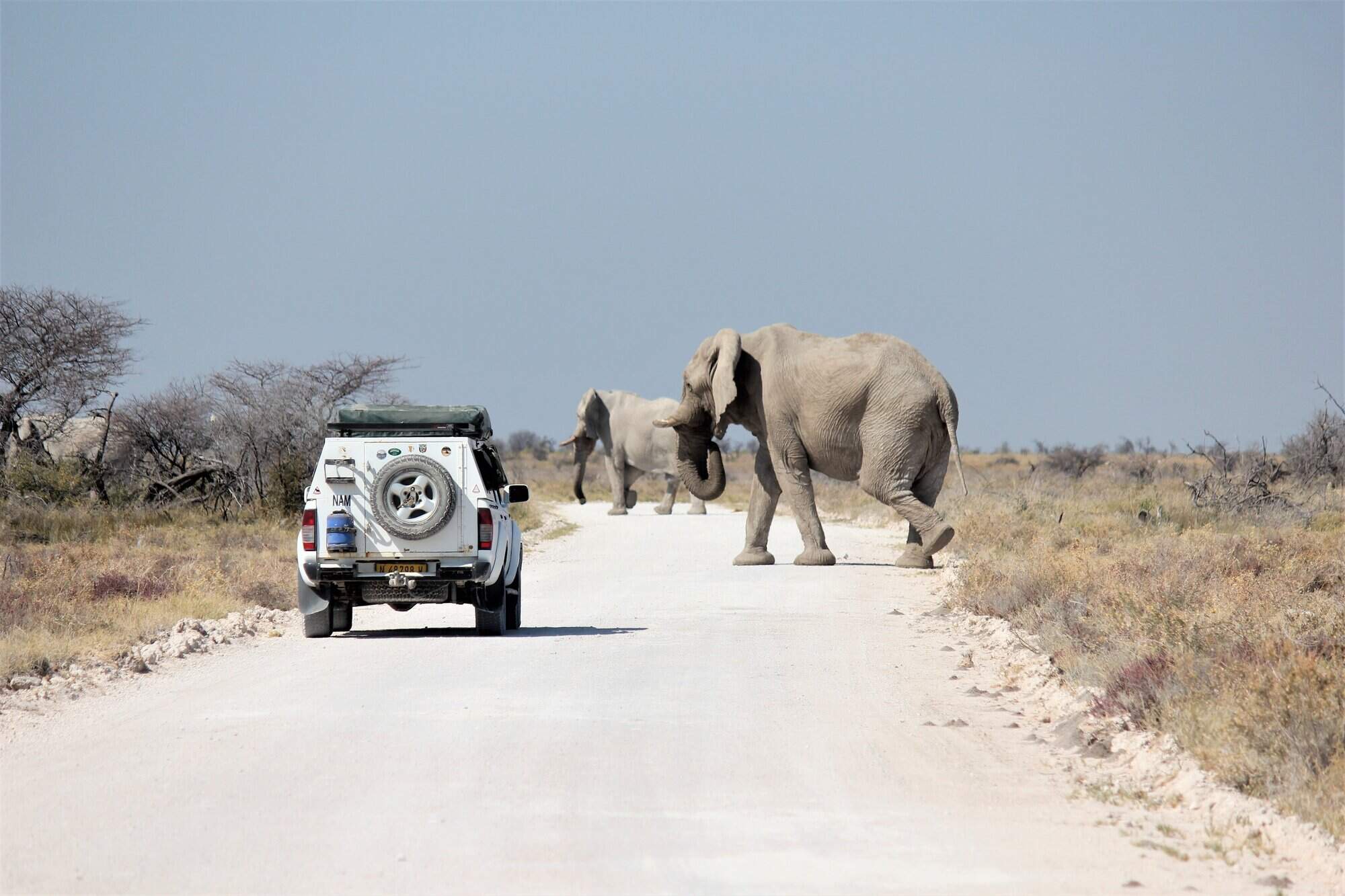
Okaukuejo Camp
Set within Etosha National Park, Okaukuejo Resort is a large camp with a productive, floodlit waterhole.
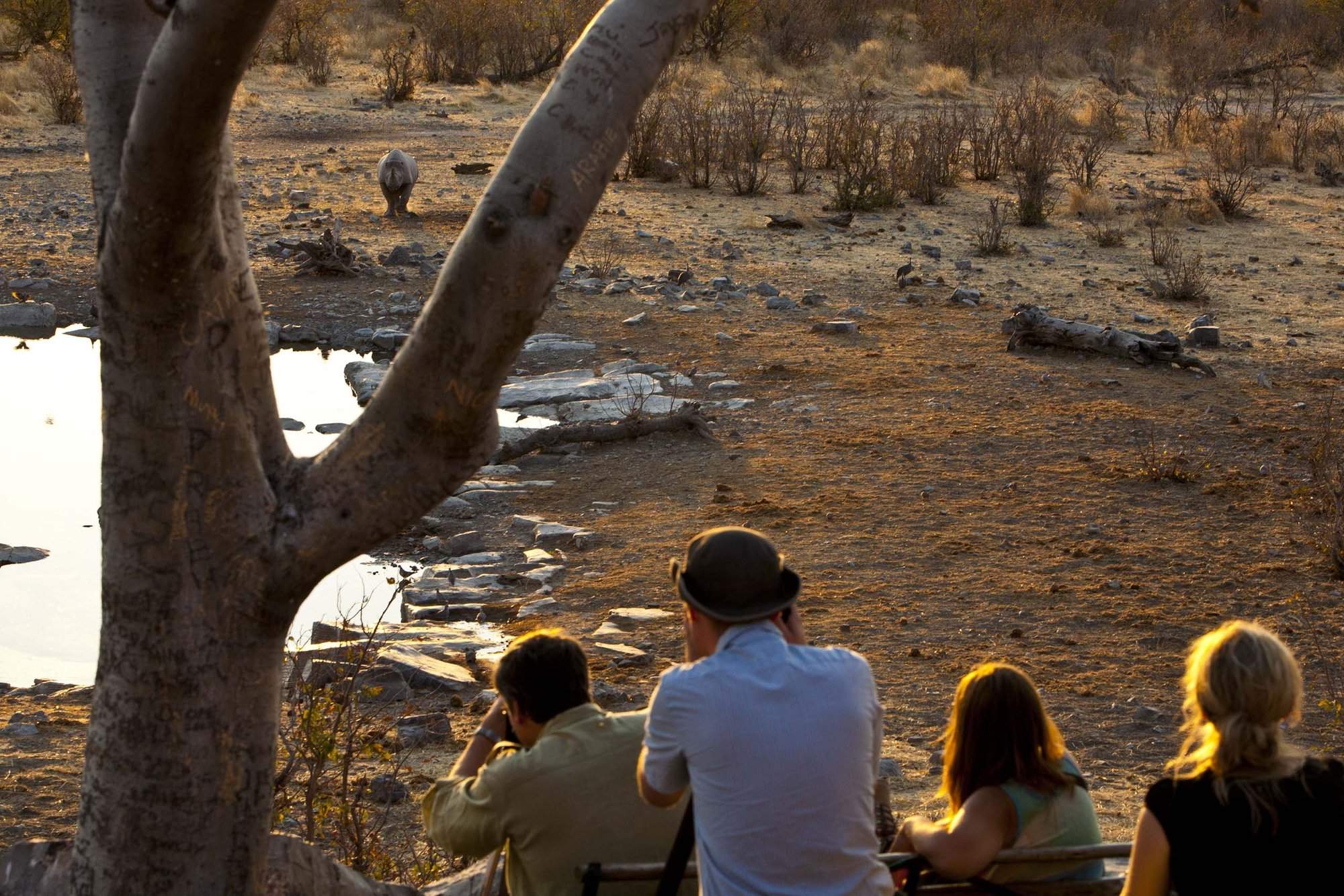
Halali Camp
The smallest of Etosha's erstwhile restcamps, overlooking its own floodlit waterhole, Halali has a superb location near the centre of Etosha Pan.
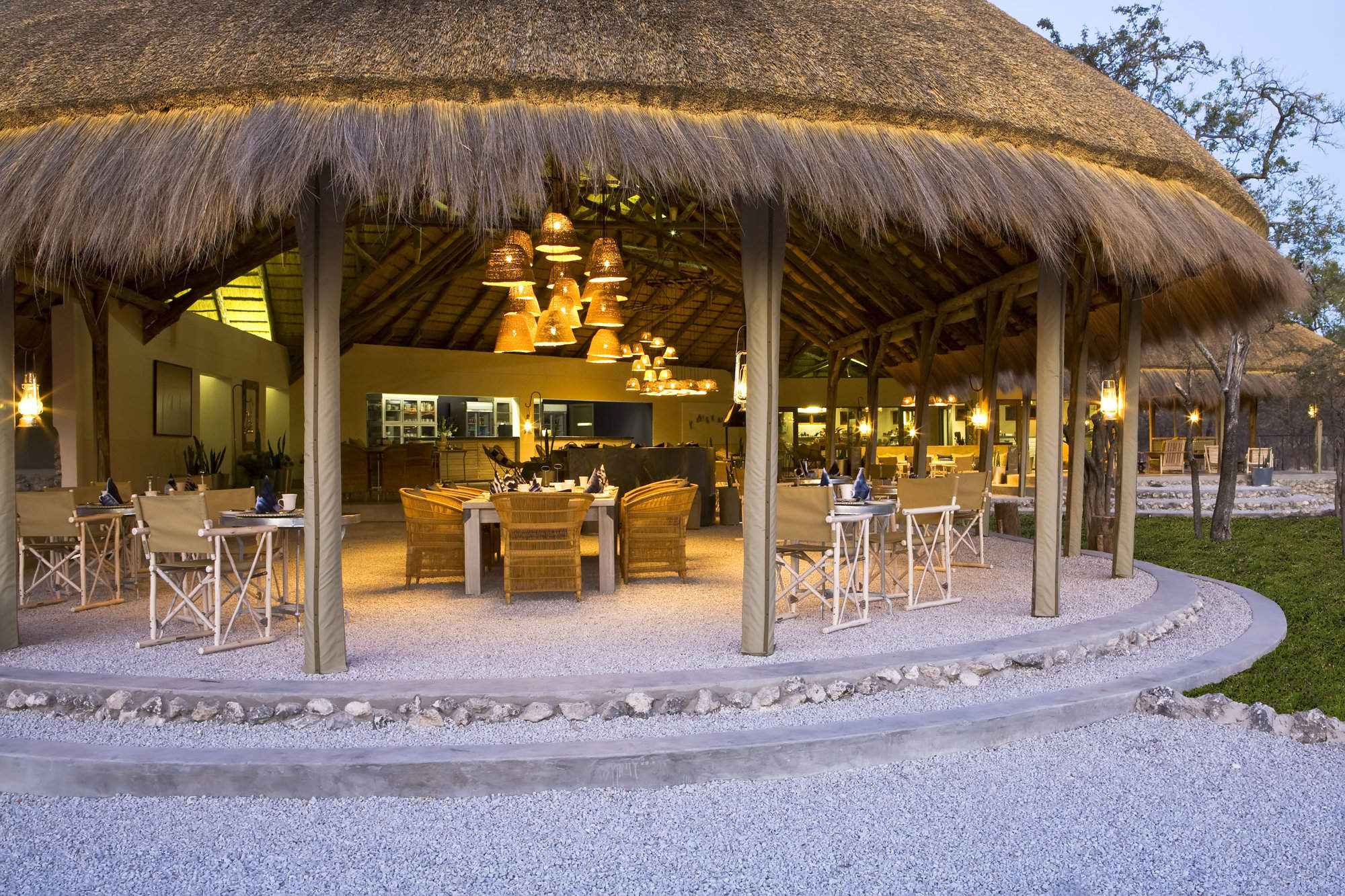
Mushara Bush Camp
The family-friendly Mushara Bush Camp offers great value and is an excellent base from which to explore Etosha National Park.
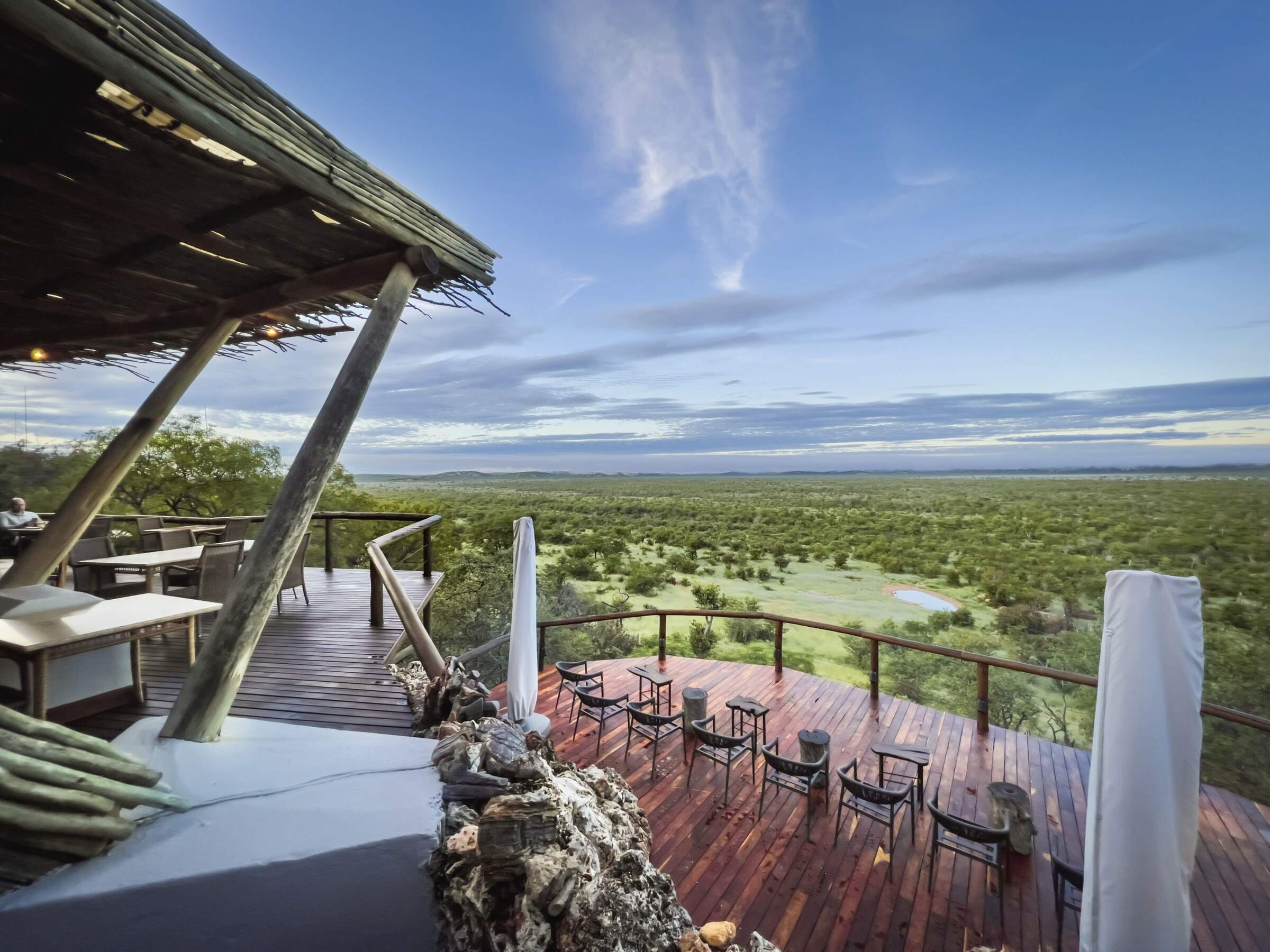
Ongava Lodge
With fantastic views over a private reserve bordering Etosha, the smart Ongava Lodge offers driving and walking safaris on the reserve, and guided drives in Etosha.
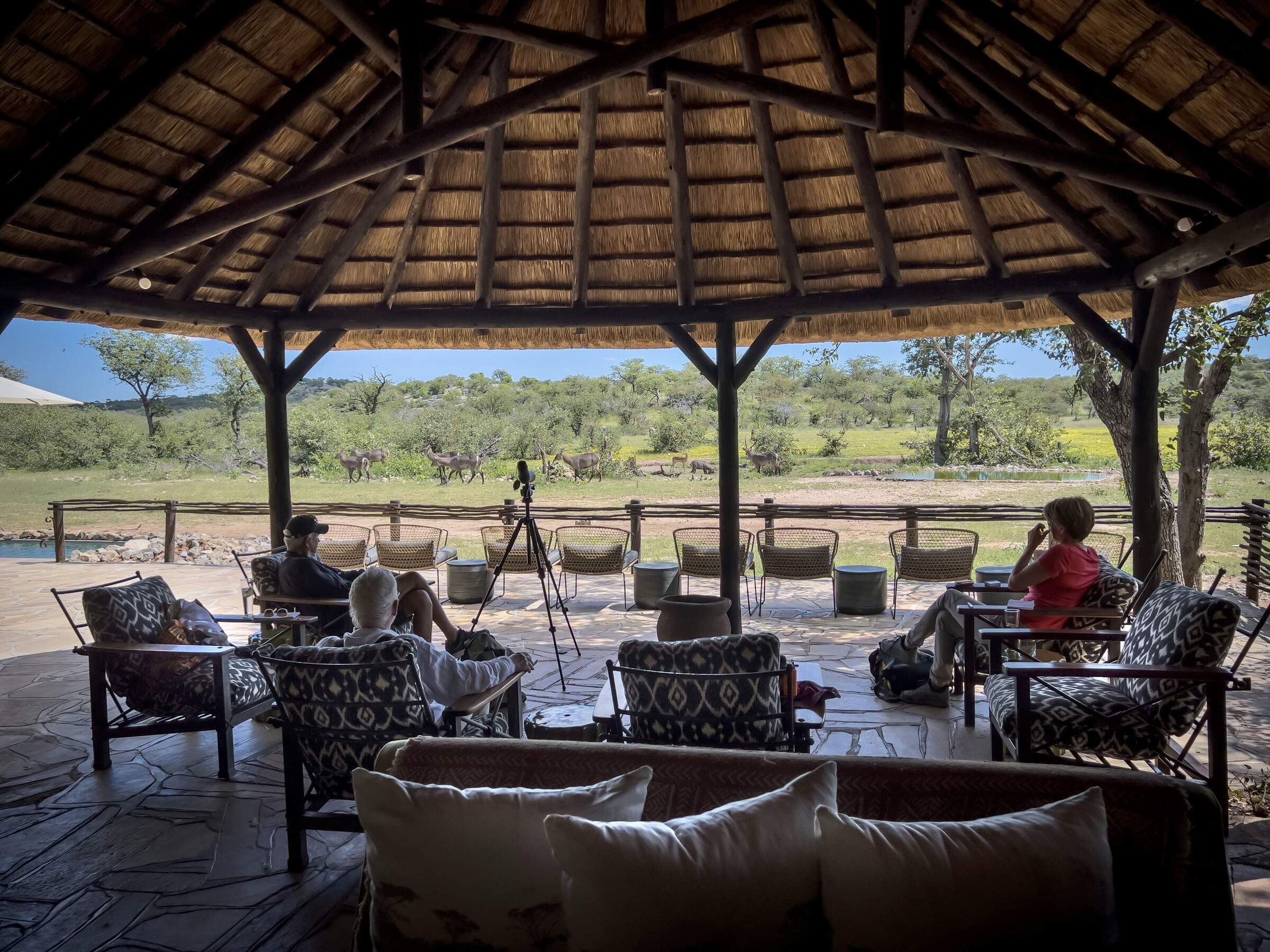
Ongava Tented Camp
Set around a waterhole on a private reserve, the small Ongava Tented Camp combines understated comfort with activities that include walks and night drives.
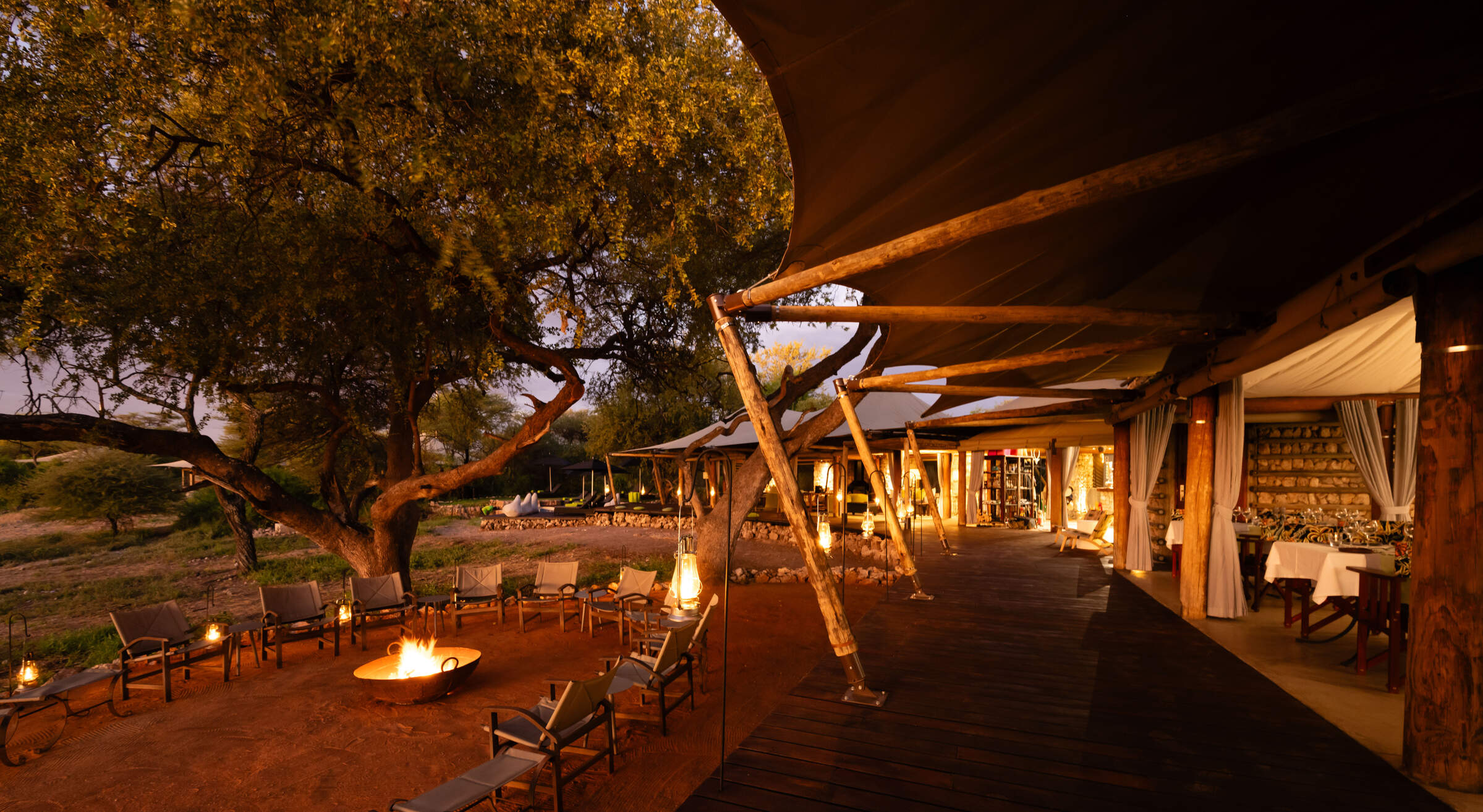
Onguma Tented Camp
Onguma Tented Camp is a lovely, little tented camp which centres around an attractive waterhole a short drive from the Von Lindequist Gate to eastern Etosha.
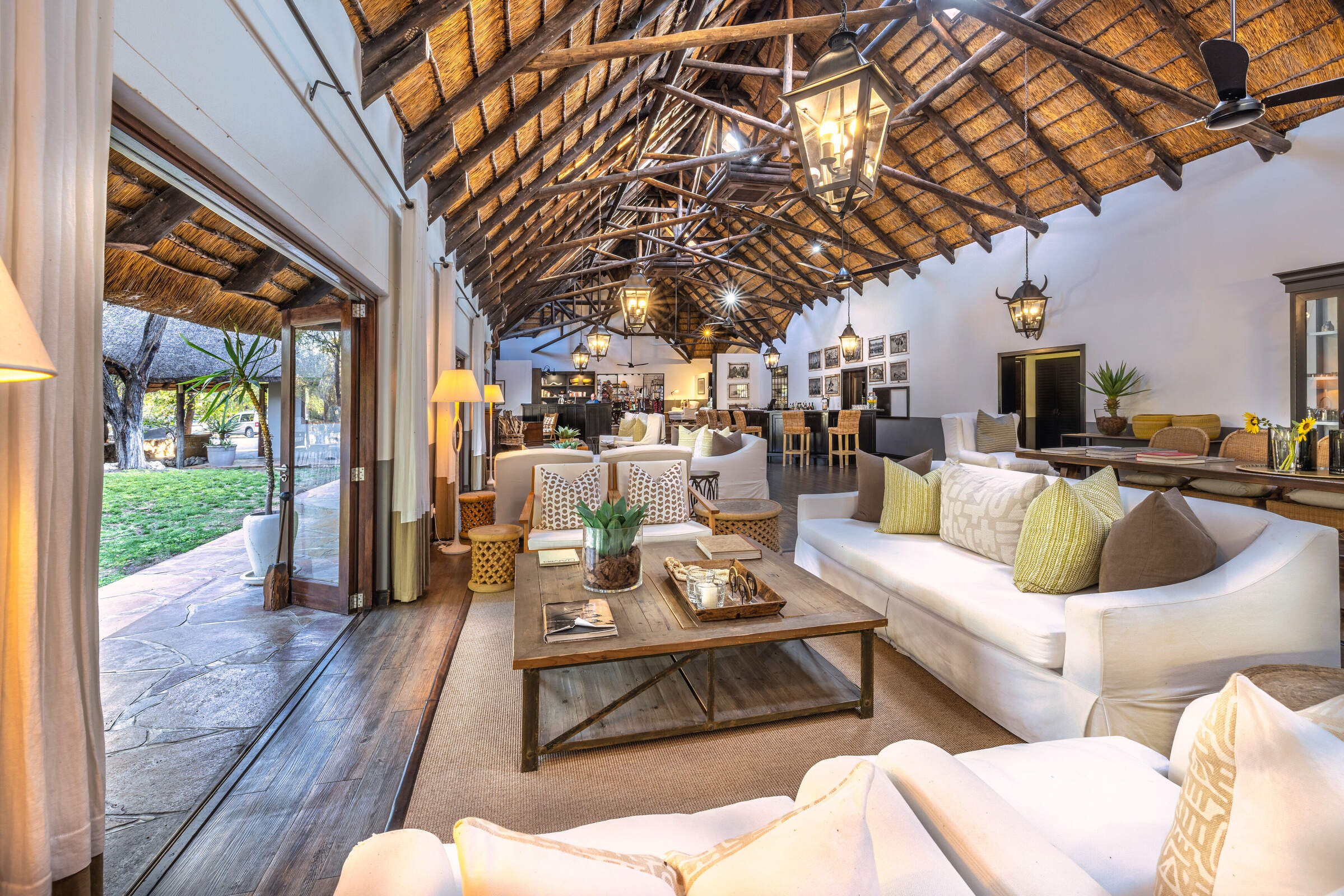
Mushara Lodge
Close to the eastern entrance to Etosha, the comfortable Mushara Lodge is well-placed for exploring the park in your own vehicle or on a guided drive.
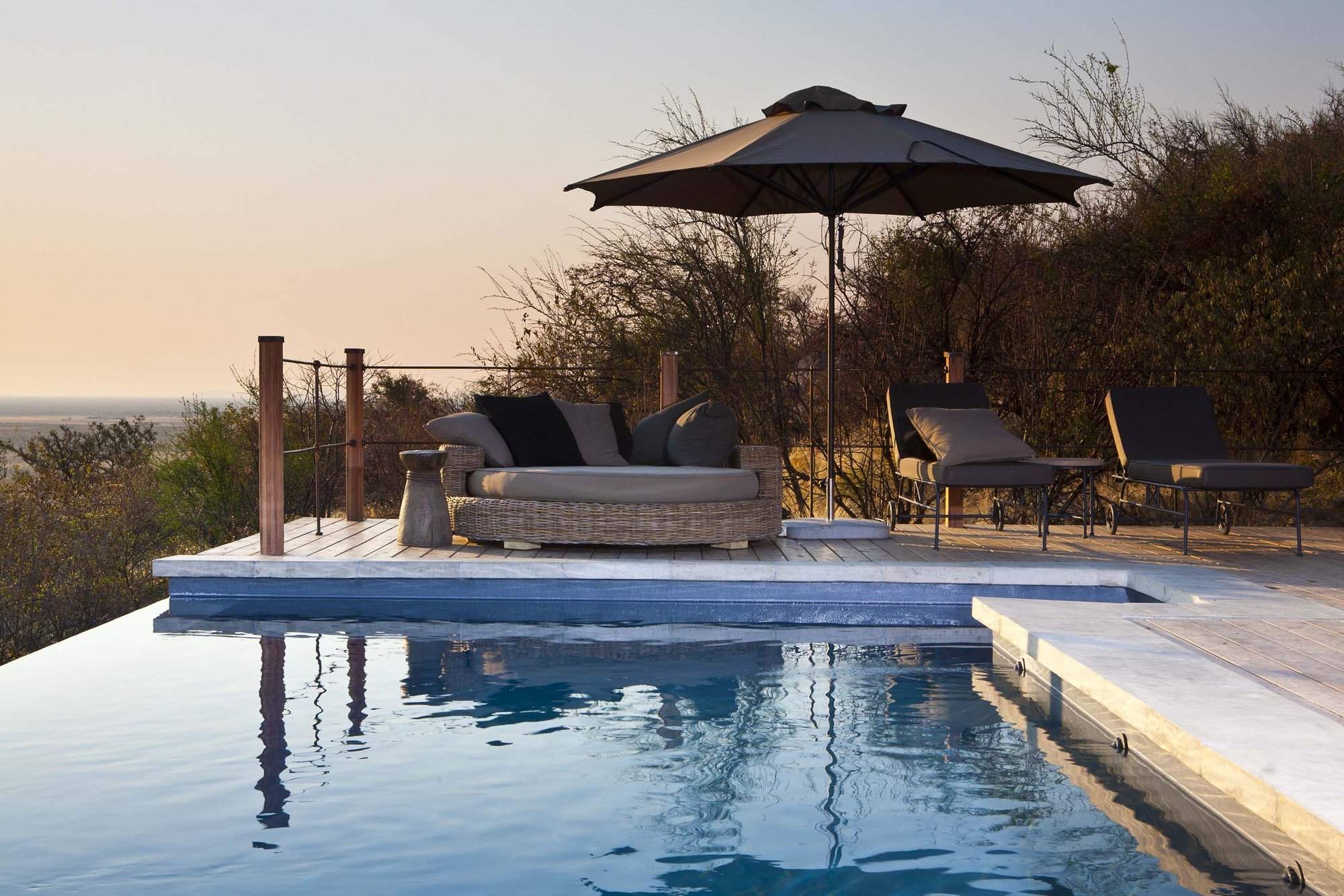
Dolomite Camp
Opened in 2011, Dolomite Camp allows visitors access to the far west side of Etosha National Park, which was previously off limits to most visitors.

Onguma Bush Camp
For great wildlife viewing without breaking the bank, the affordable and understated luxury of Onguma Bush Camp could be perfect.
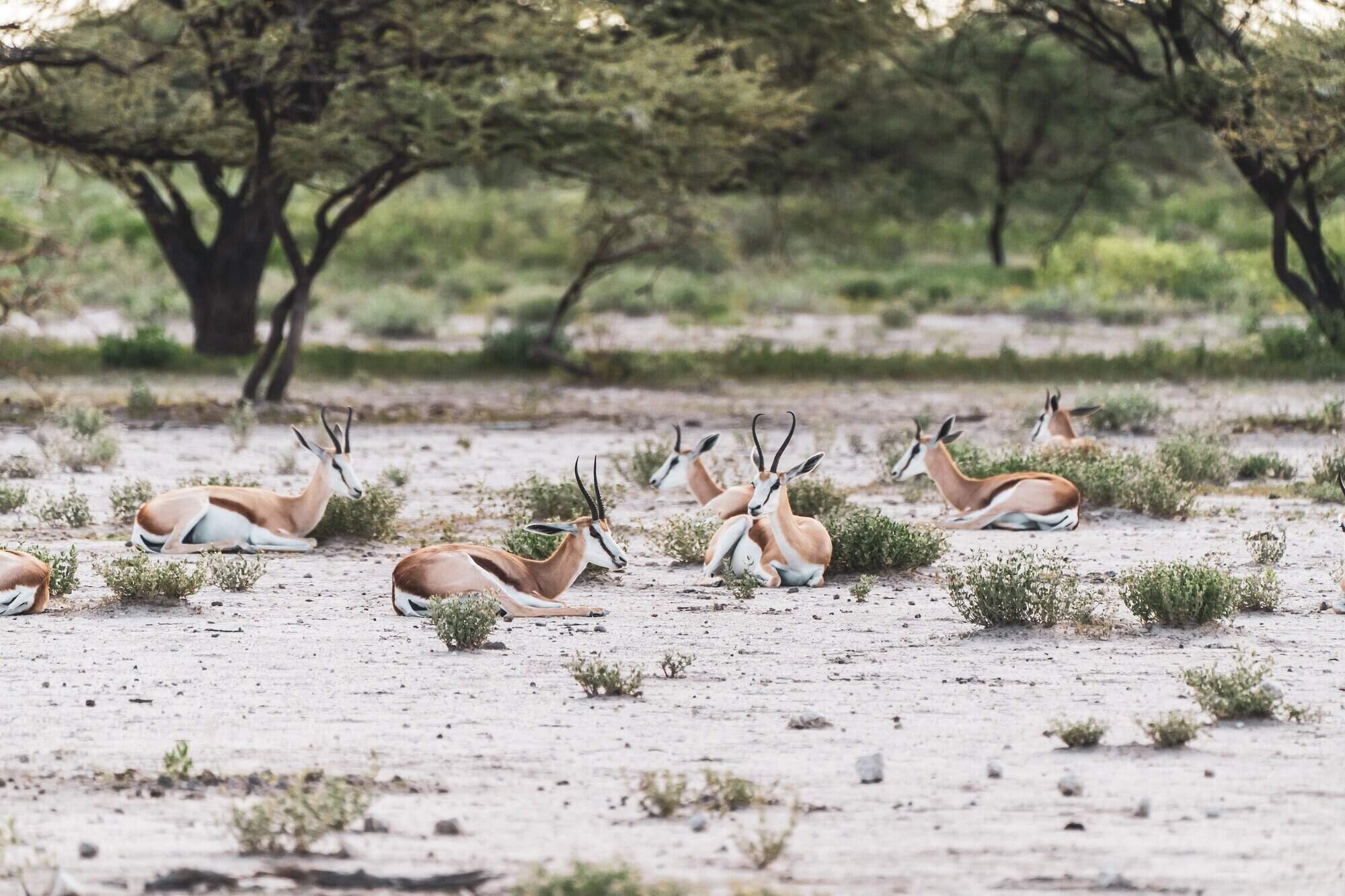
Namutoni Camp
Centred on an old fort, the government run Namutoni Camp is located just inside Etosha National Park, close to Fisher's Pan.
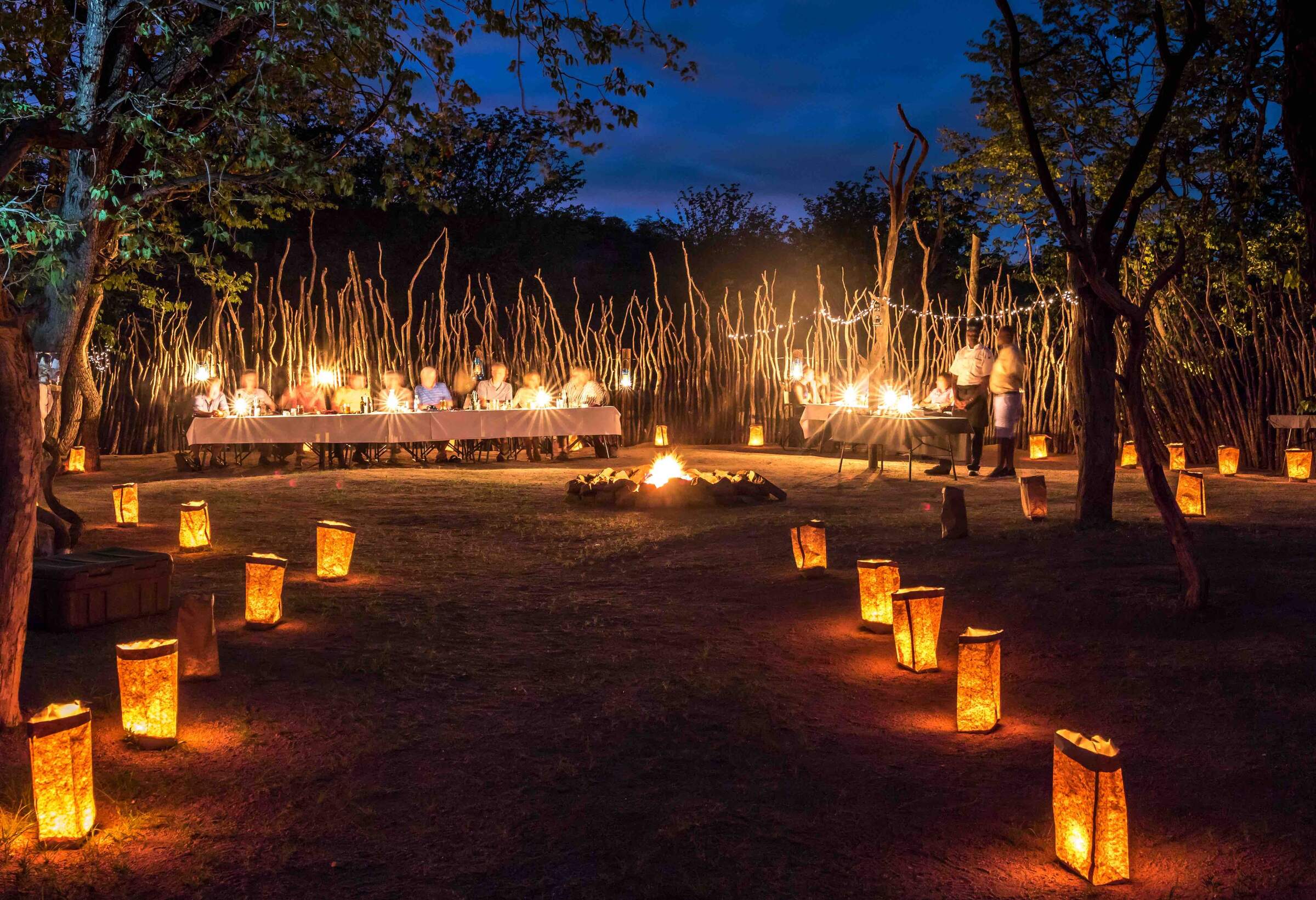
Hobatere Lodge
To the west of Etosha National Park, on the edge of Damaraland, Hobatere Lodge offers good game-viewing on its own reserve.
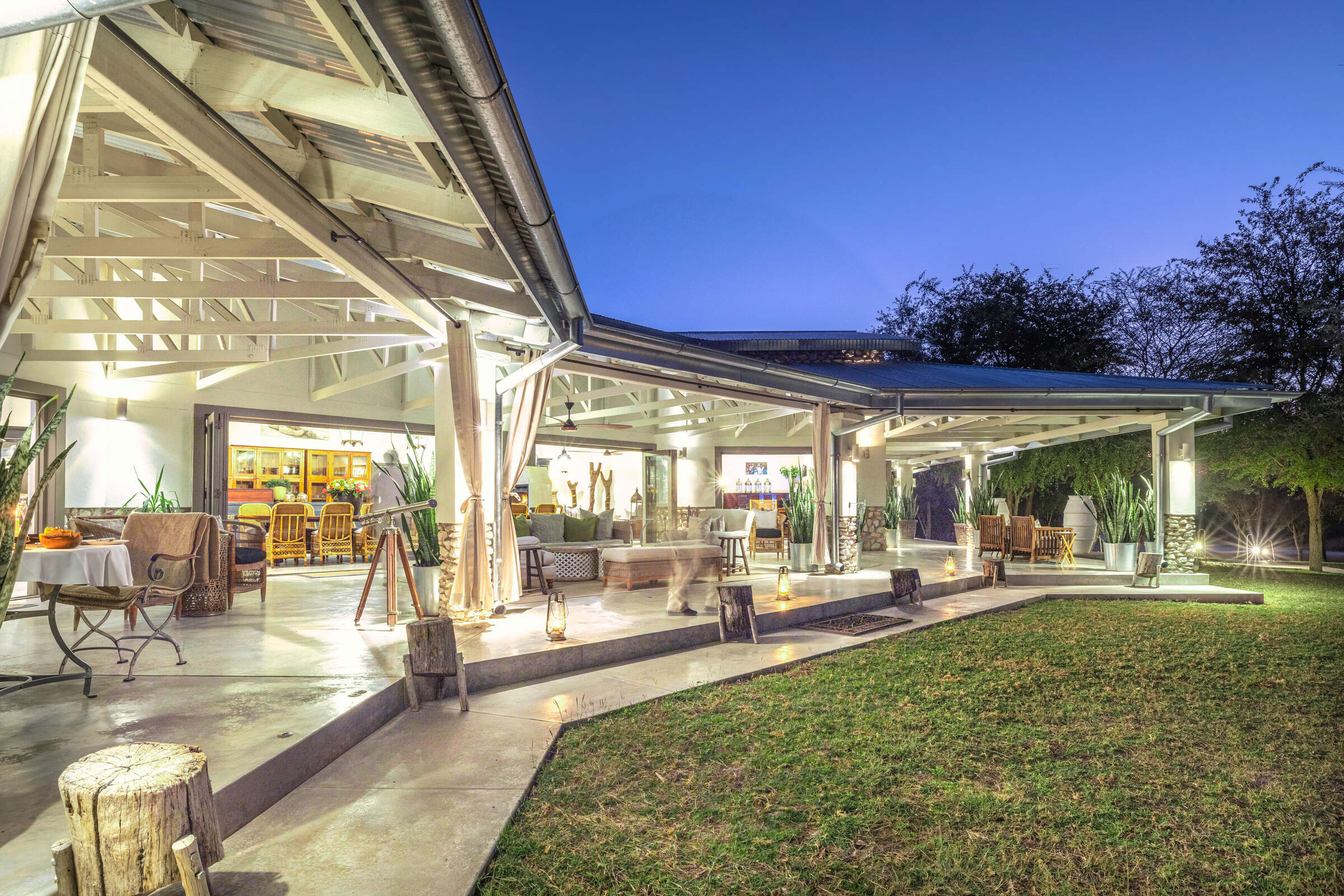
Mushara Outpost
Intimate and luxurious, Mushara Outpost is well-placed on a private reserve to explore nearby Etosha National Park on your own or on a guided drive.
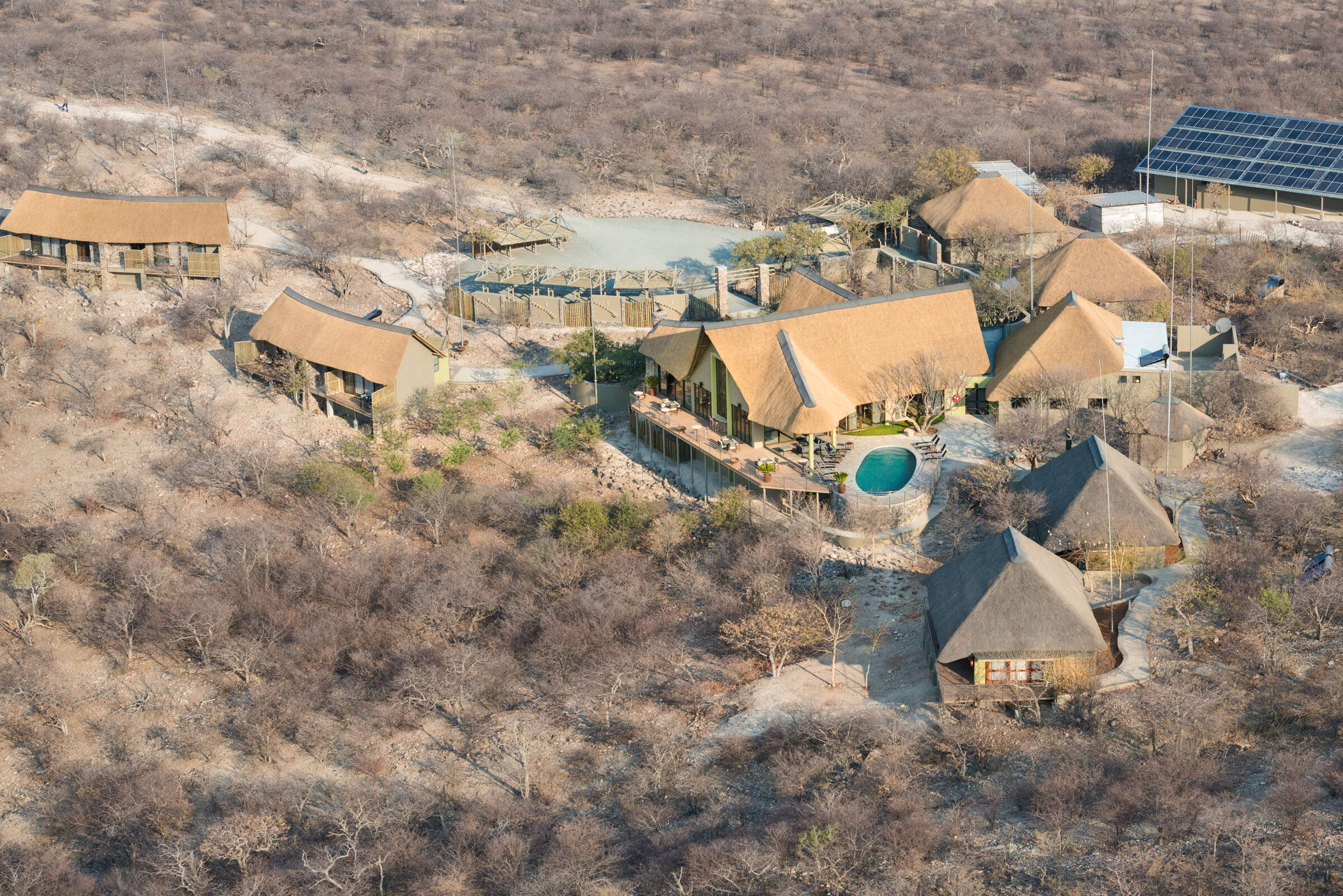
Safarihoek Lodge
At the heart of the private Etosha Heights Reserve, Safarihoek Lodge offers comfortable accommodation and excellent game-viewing.
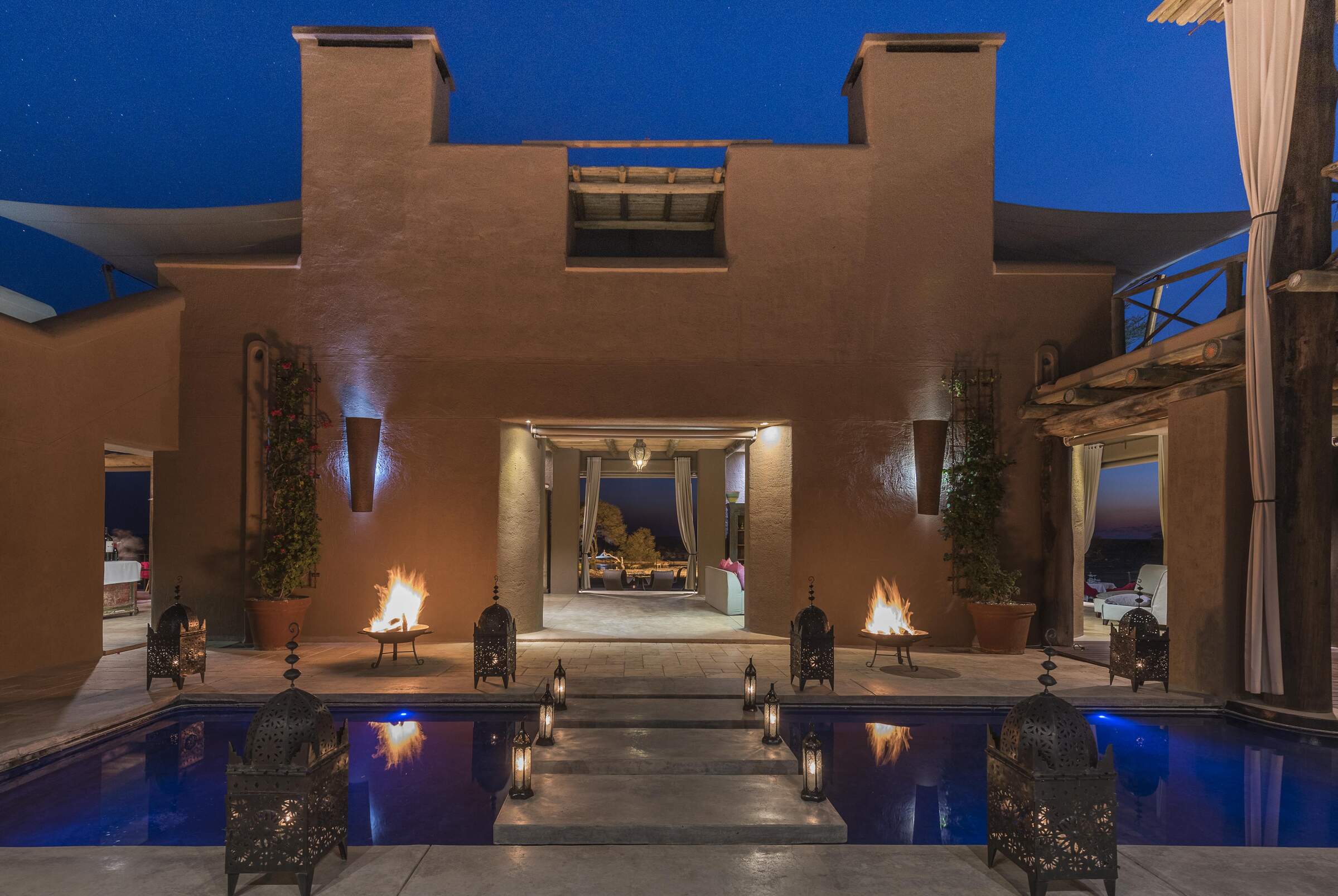
Onguma The Fort
The Fort is the jewel in the crown of the Onguma lodges, and arguably the whole of eastern Etosha.
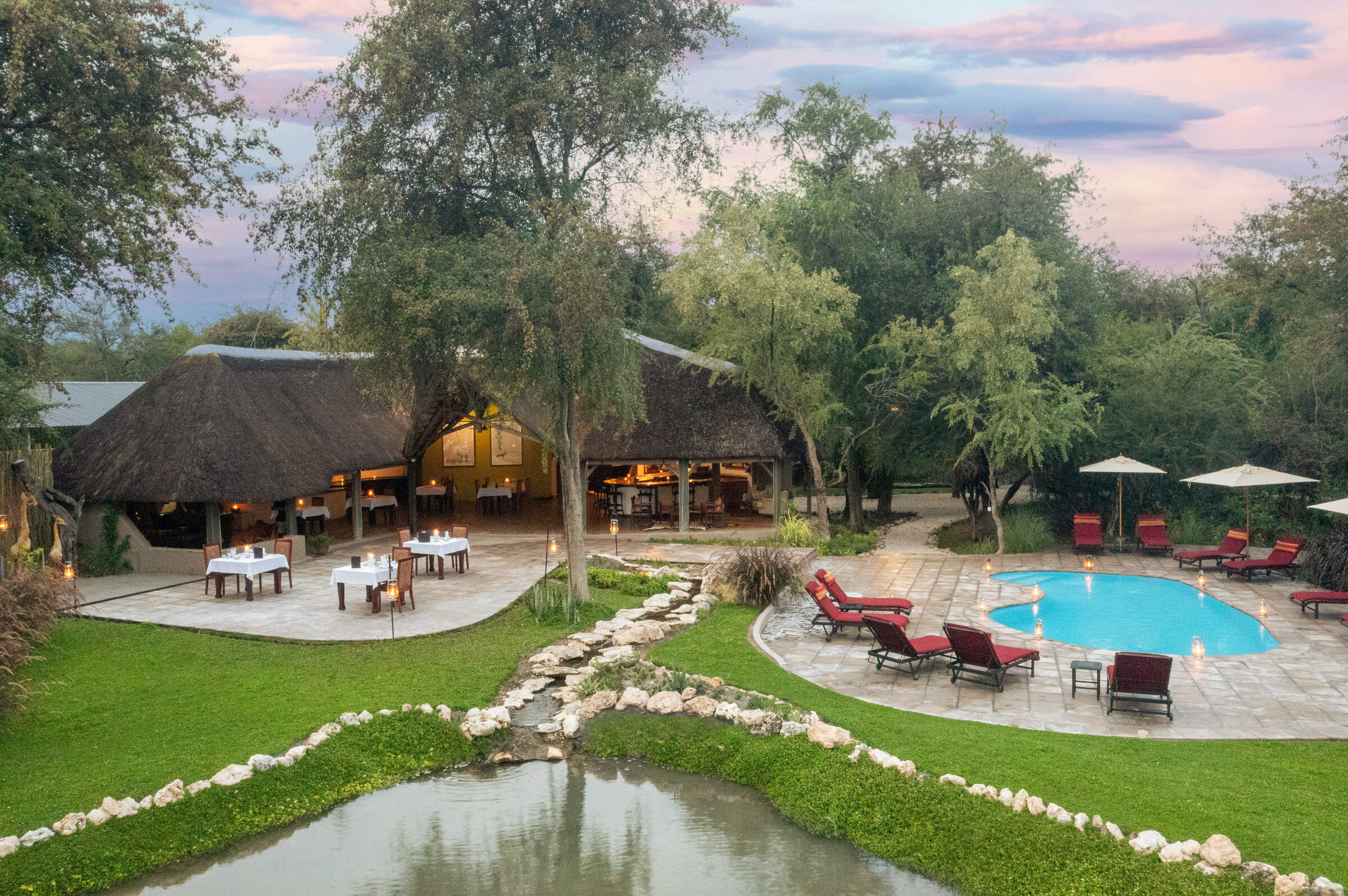
Onguma Forest Camp
From its woodland setting on the Onguma Reserve, Forest Camp is within easy striking distance of Namibia’s flagship national park.
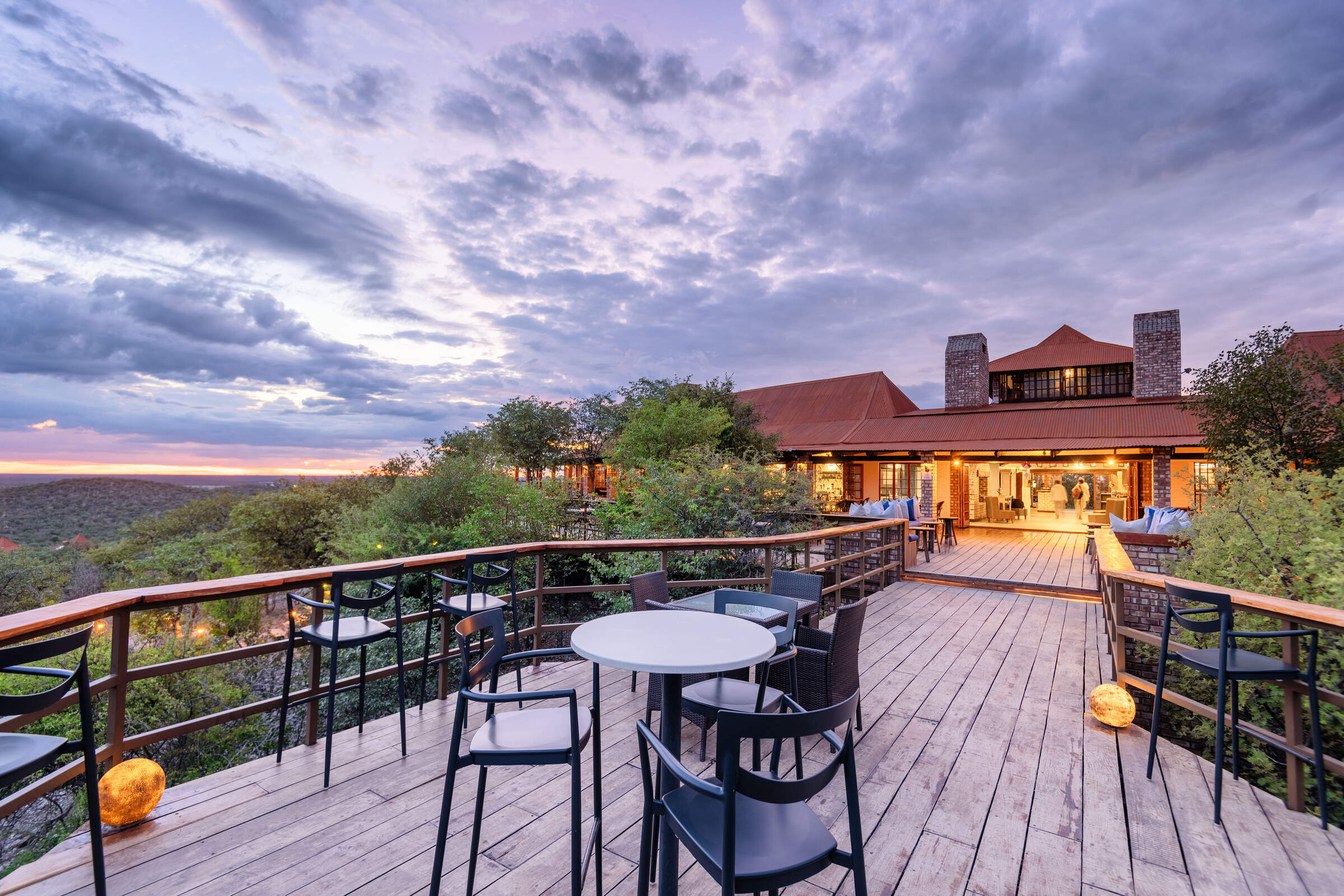
Etosha Safari Lodge
A short drive from Etosha National Park's southern entrance, Etosha Safari Lodge is a convenient base from which to explore the park.
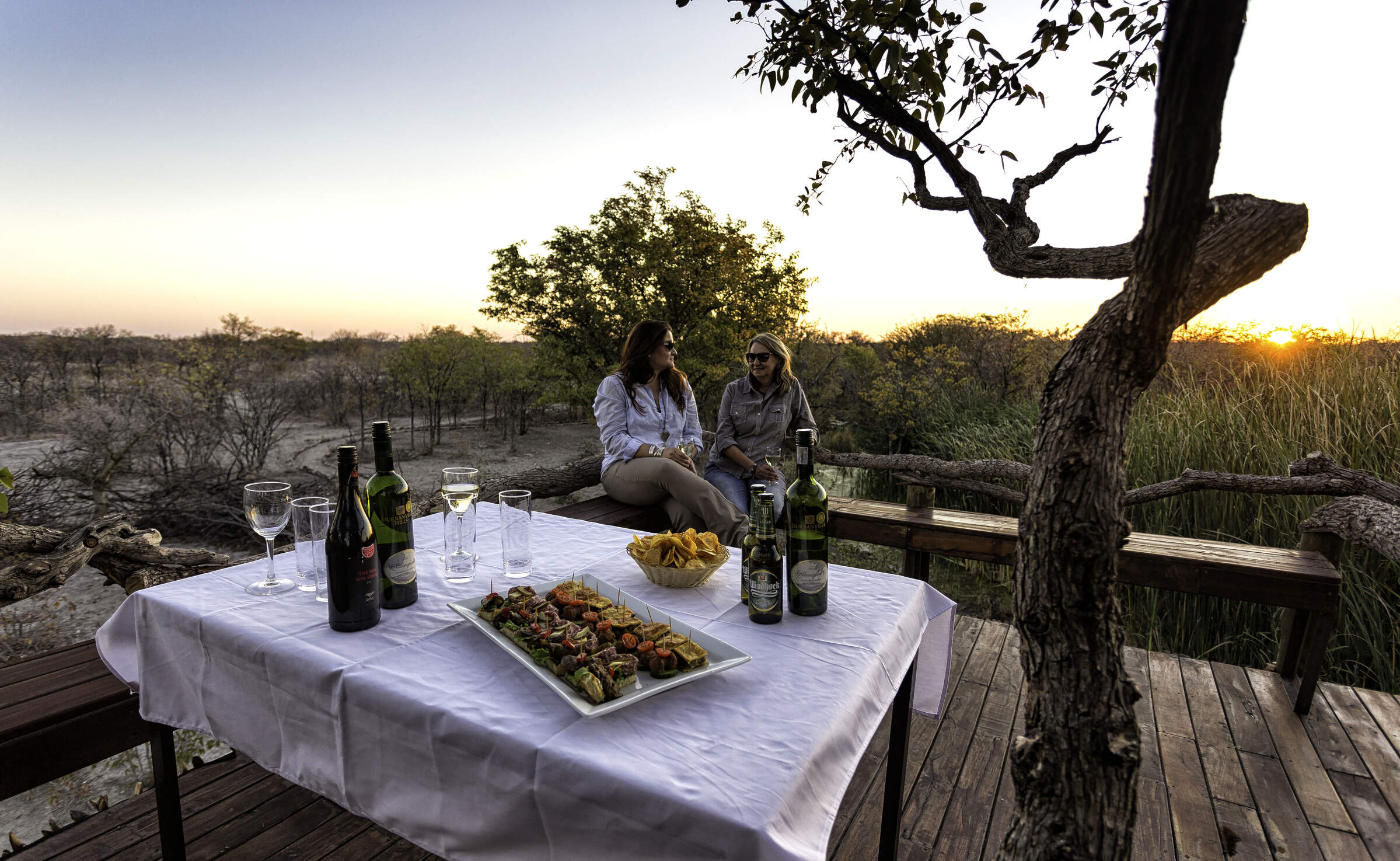
Taleni Etosha Village
Only 4km from Etosha's southern entrance, Taleni Etosha Village is an affordable base from which to explore the park.
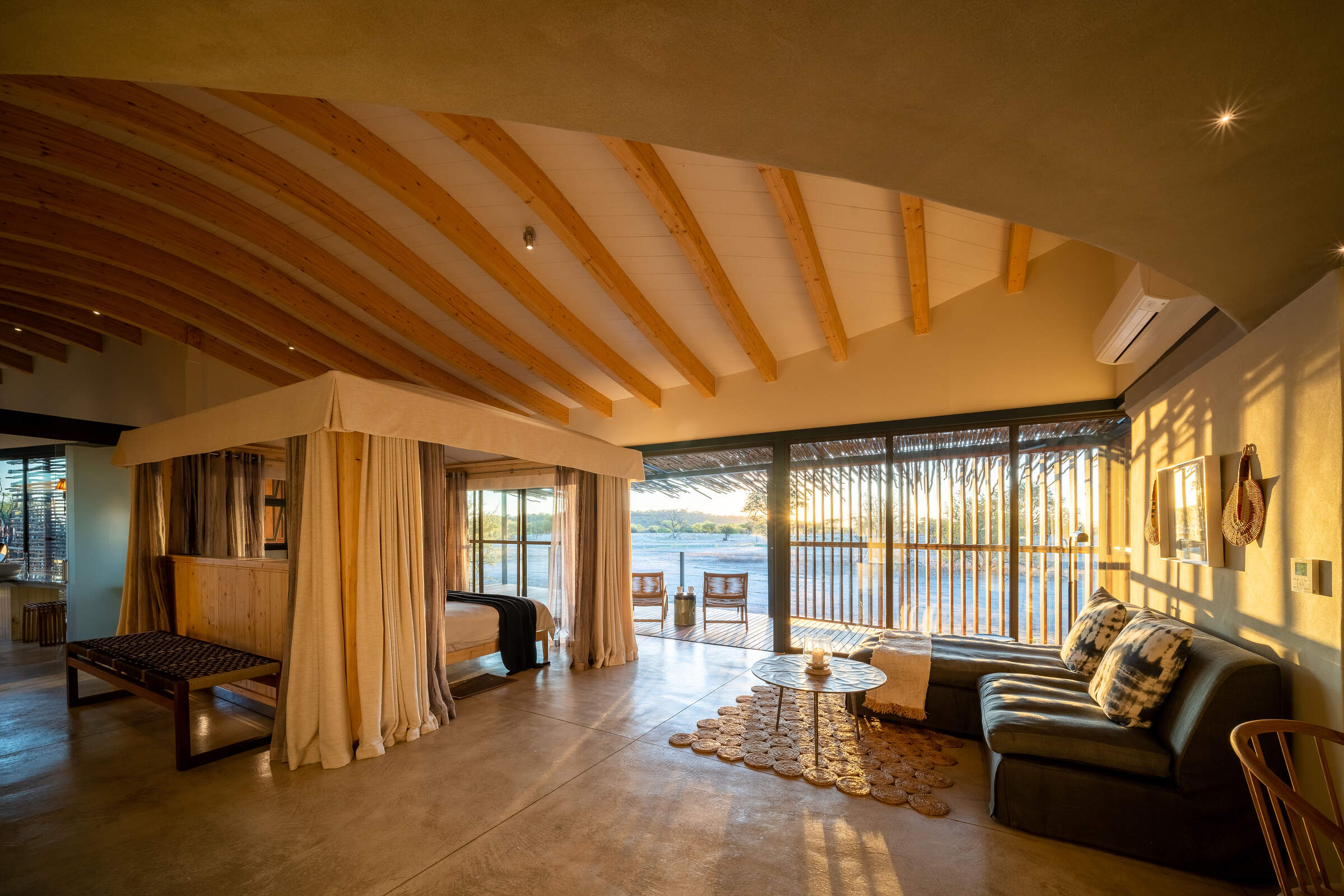
Andersson's at Ongava
With game drives on both its private reserve and in Etosha, Andersson's at Ongava also offers access to the Ongava Research Centre.
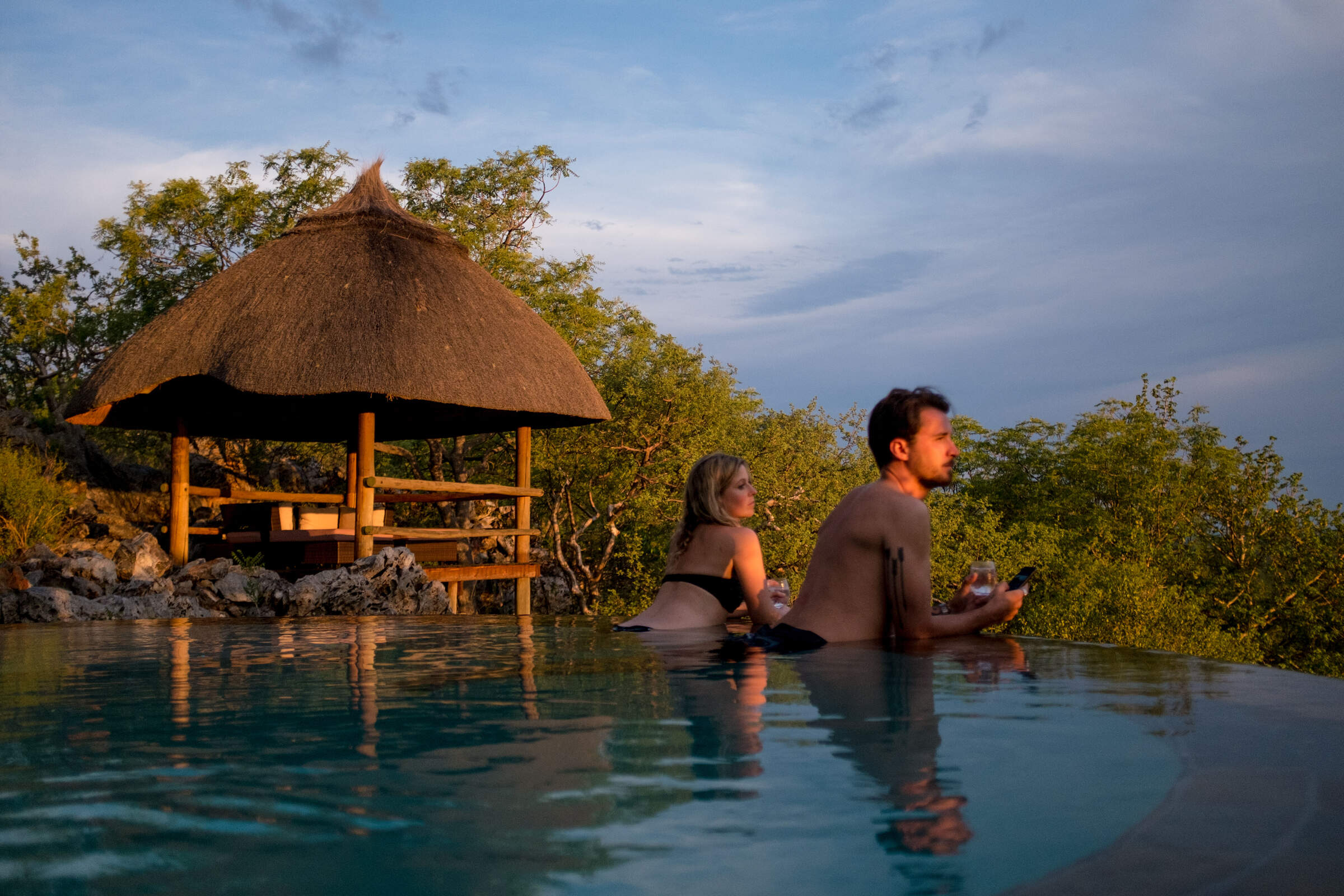
Little Ongava
The beautifully located and luxurious Little Ongava is a stunning place to stay in order to explore Etosha National Park and the private Ongava Reserve.
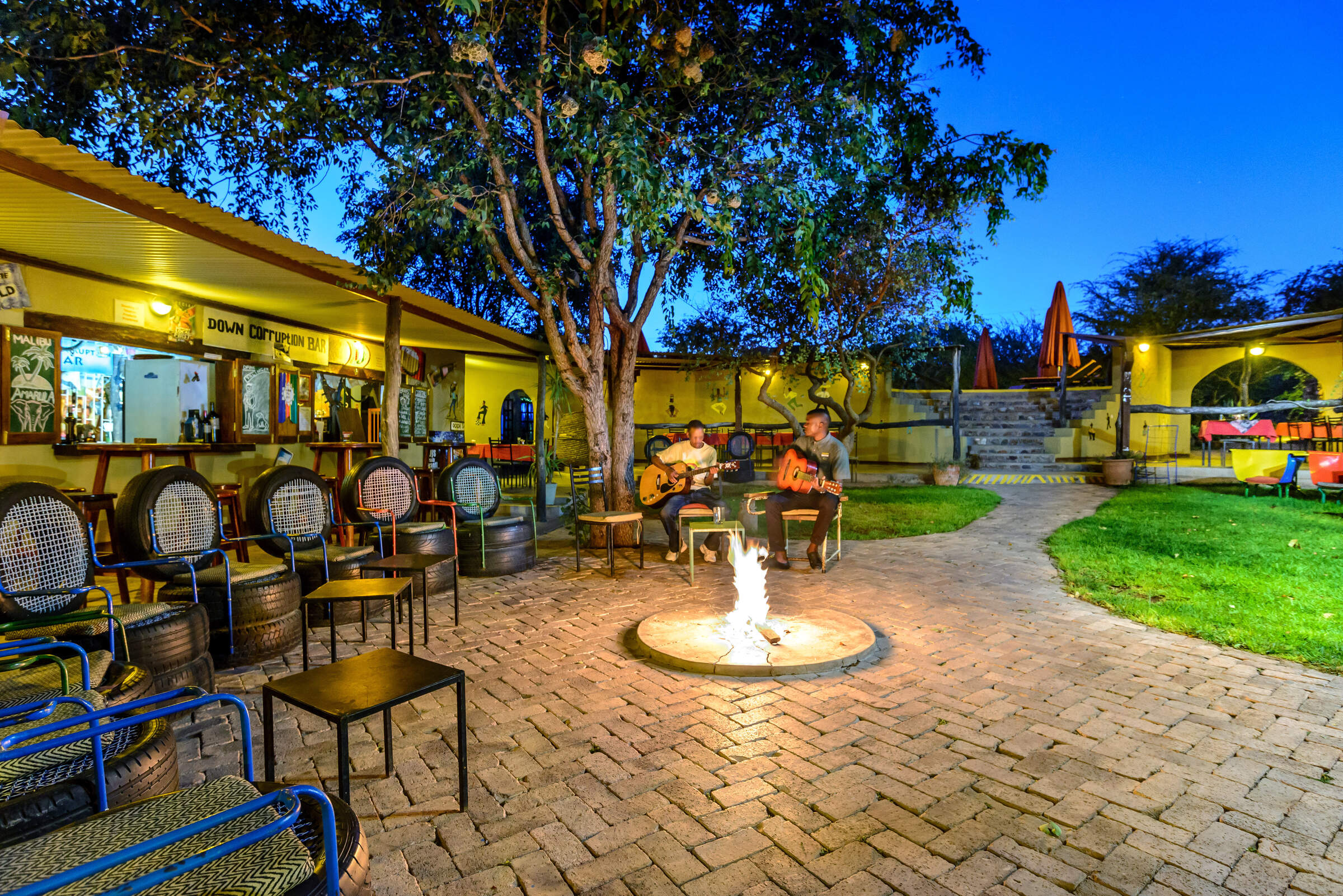
Etosha Safari Camp
Funky, low-key and very original, Etosha Safari Camp is well placed for visiting Etosha National Park on a self-drive or guided safari.
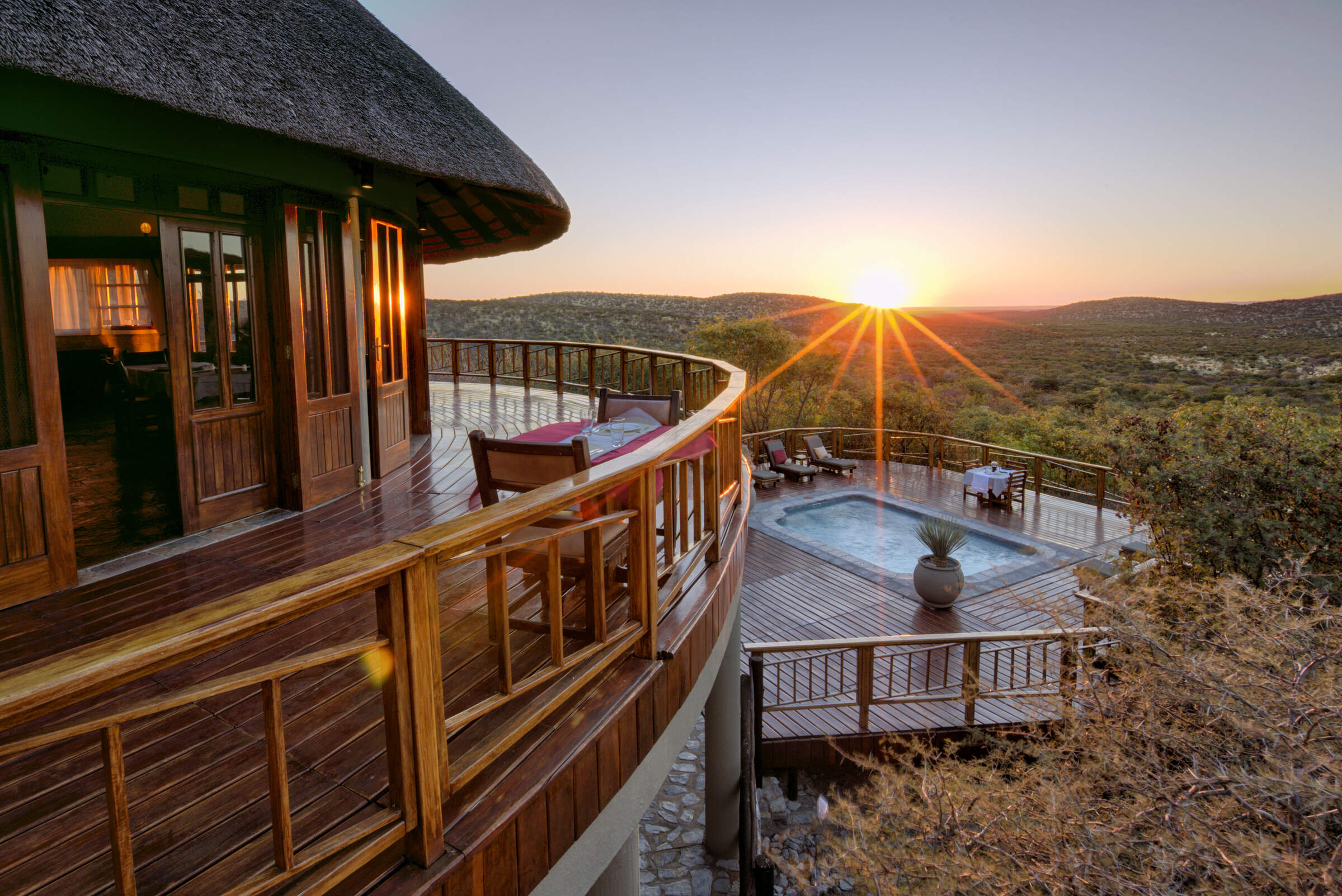
Mountain Lodge
In the heart of the private Etosha Heights Reserve, the family-friendly Mountain Lodge offers game drives and bush walks within an exclusive environment.
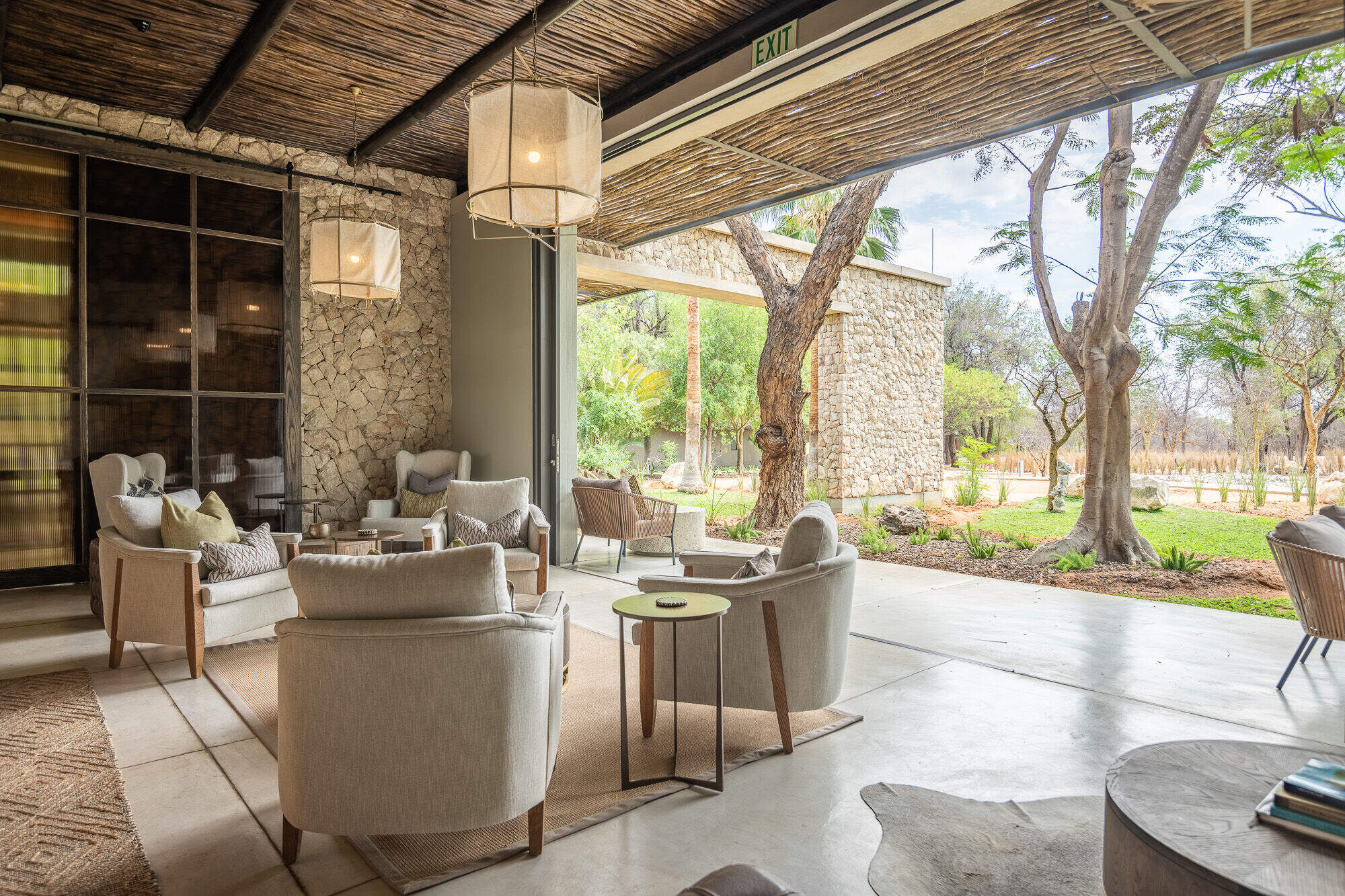
Mokuti Etosha Lodge
With 106 rooms, child-friendly Mokuti Etosha Lodge is more like a hotel than a lodge. Facilities to include a gym, spa, tennis courts and even a snake park.
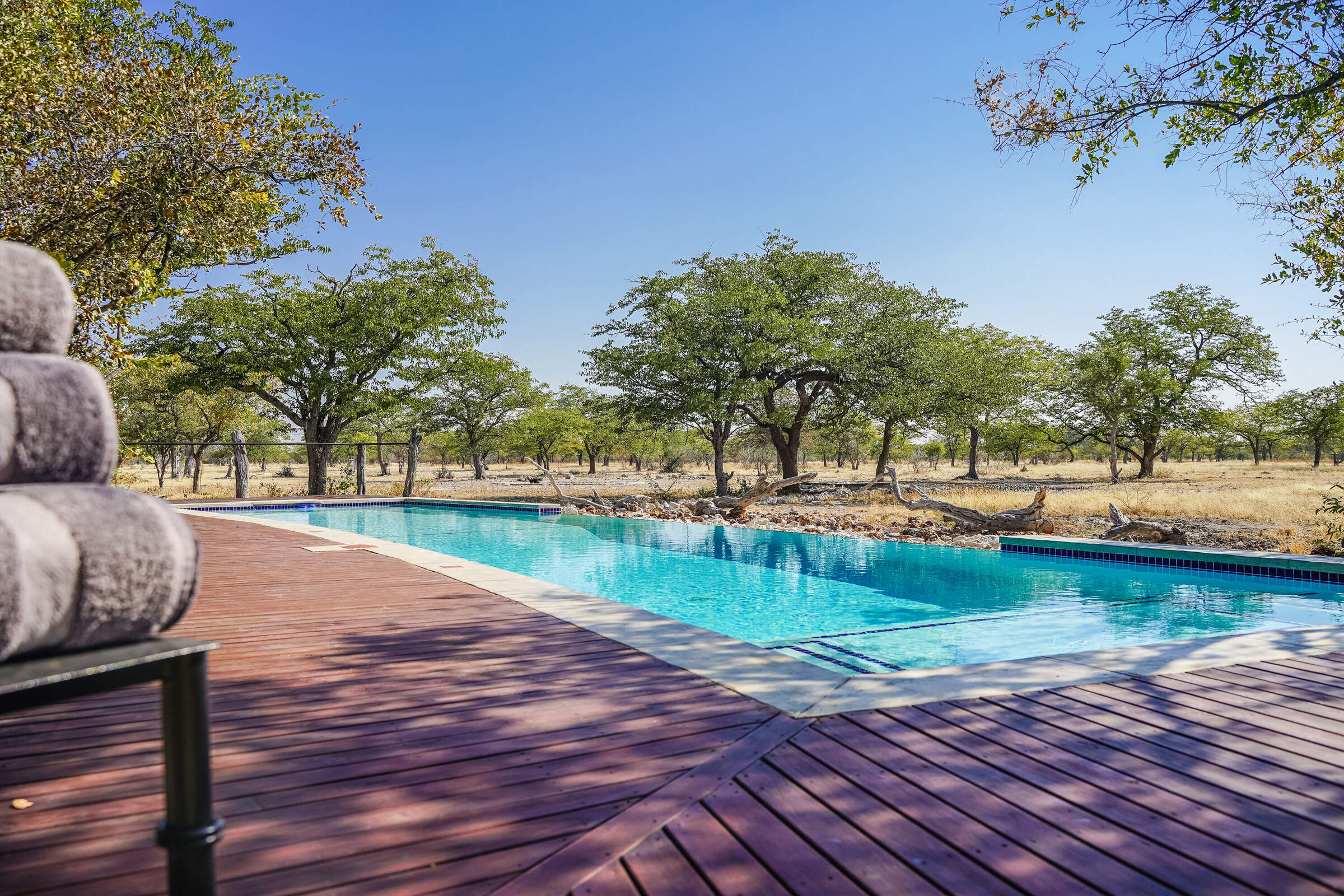
Etosha Oberland Lodge
A short drive from Etosha National Park's southern entrance, Etosha Oberland Lodge is a very comfortable base from which to explore the park, with excellent food.
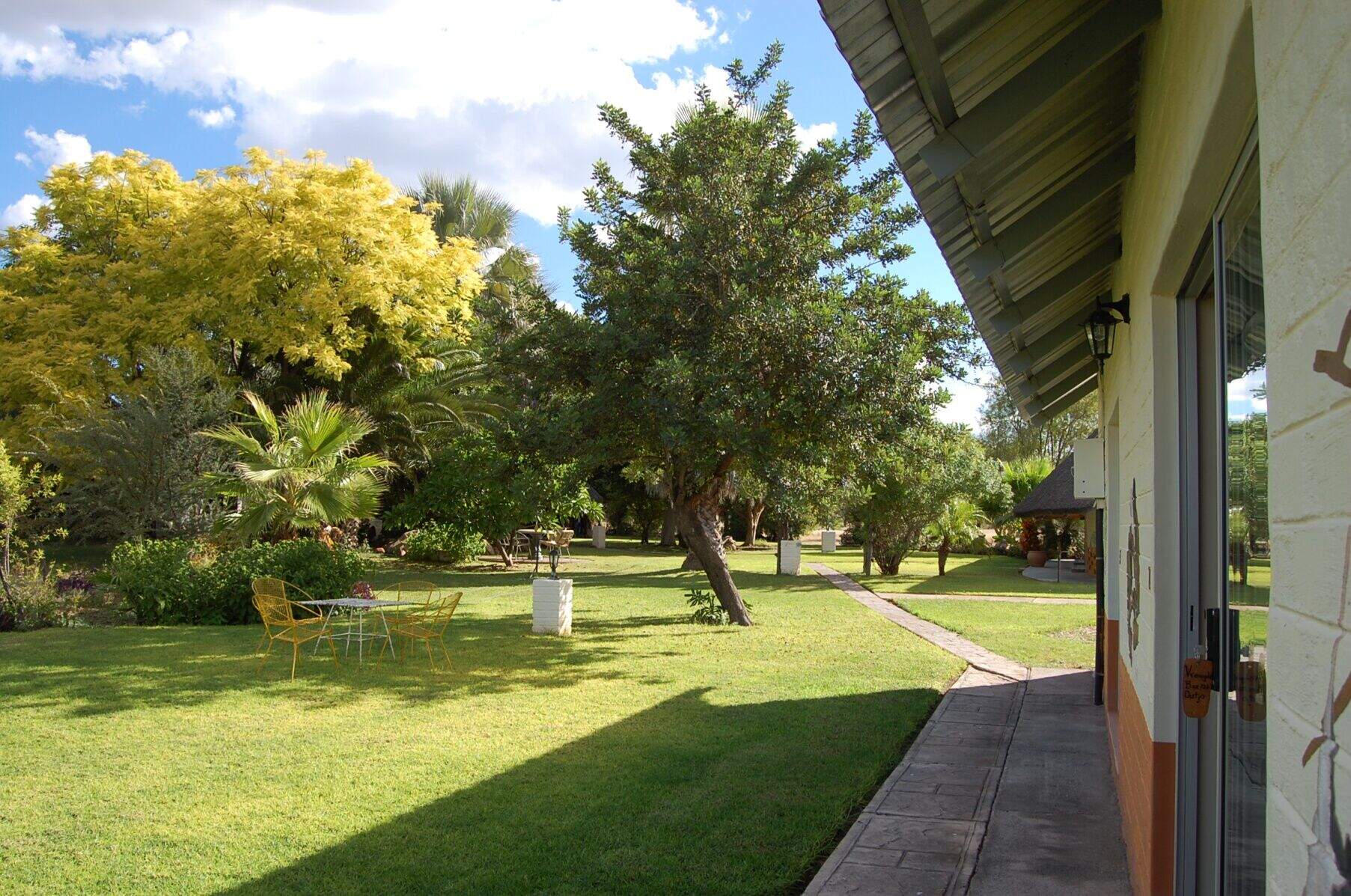
Vreugde Guest Farm
Vreugde Guest Farm is a delightful owner-run and working sheep farm where you can expect a warm welcome and charming hospitality.
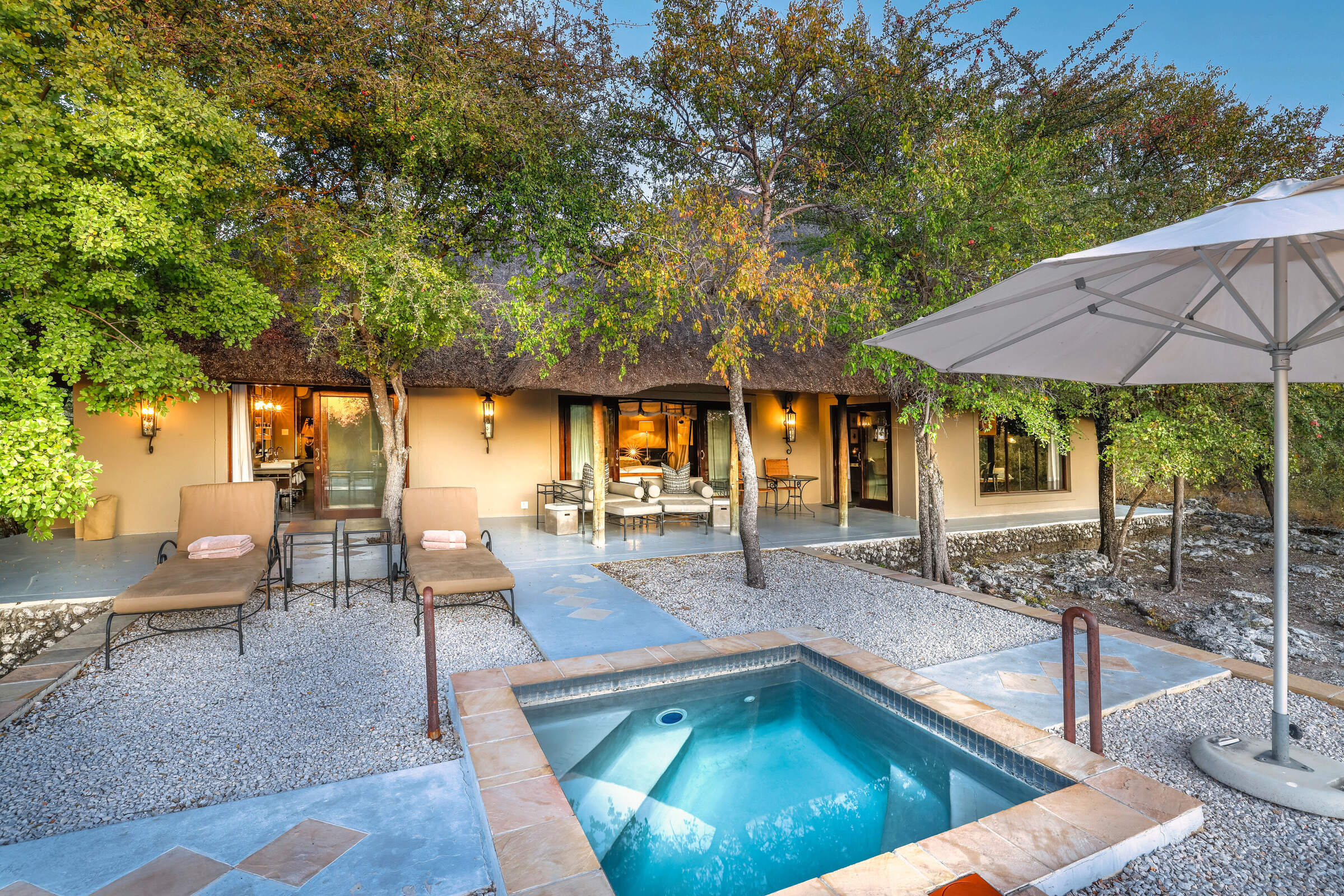
Villa Mushara
Offering luxury on a peaceful private reserve close to Etosha, Villa Mushara is a great choice for honeymooners & those wishing to indulge themselves.
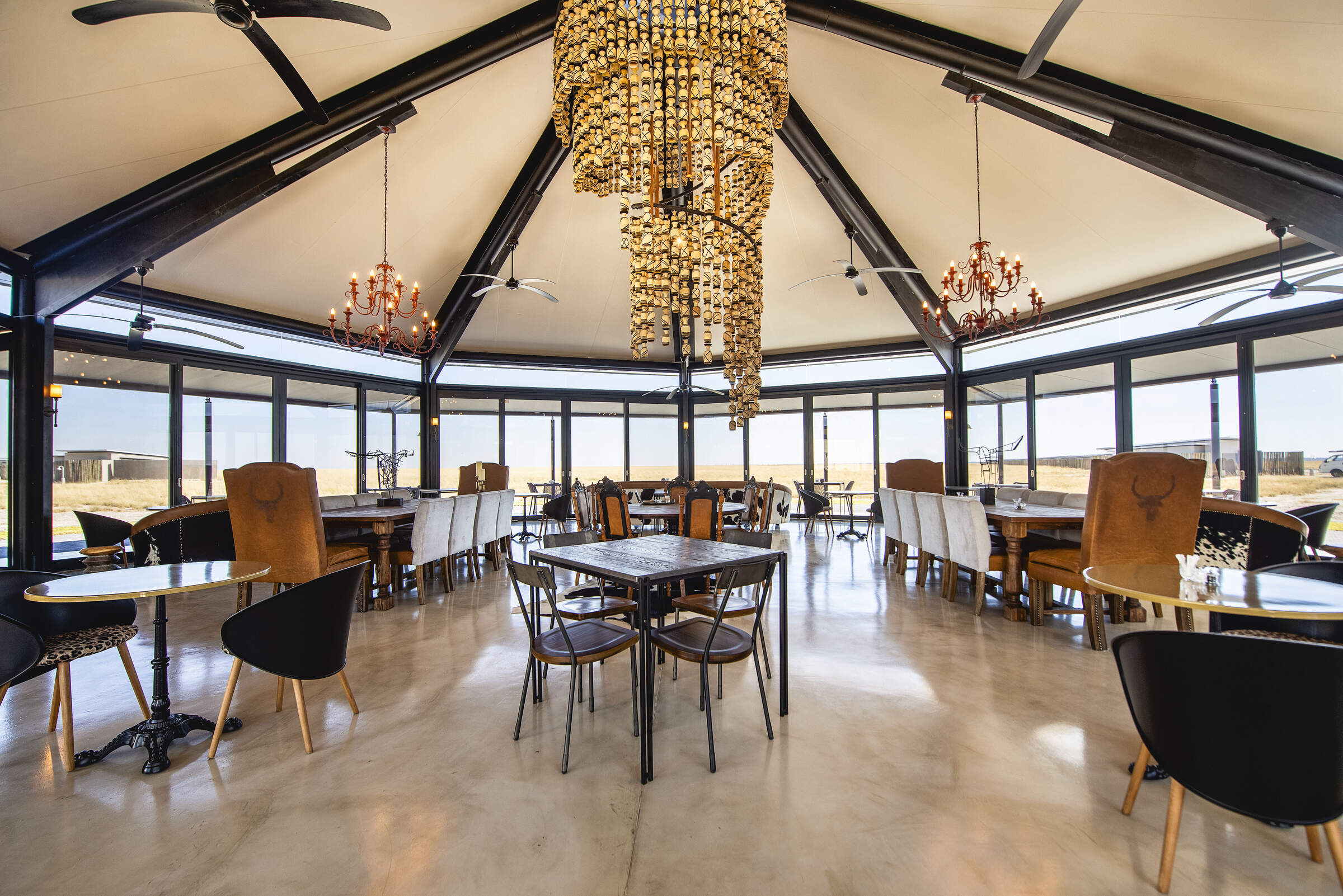
Etosha King Nehale
A short drive from the national park's northern entrance, Etosha King Nehale Lodge is an interesting and comfortable base from which to explore the park.
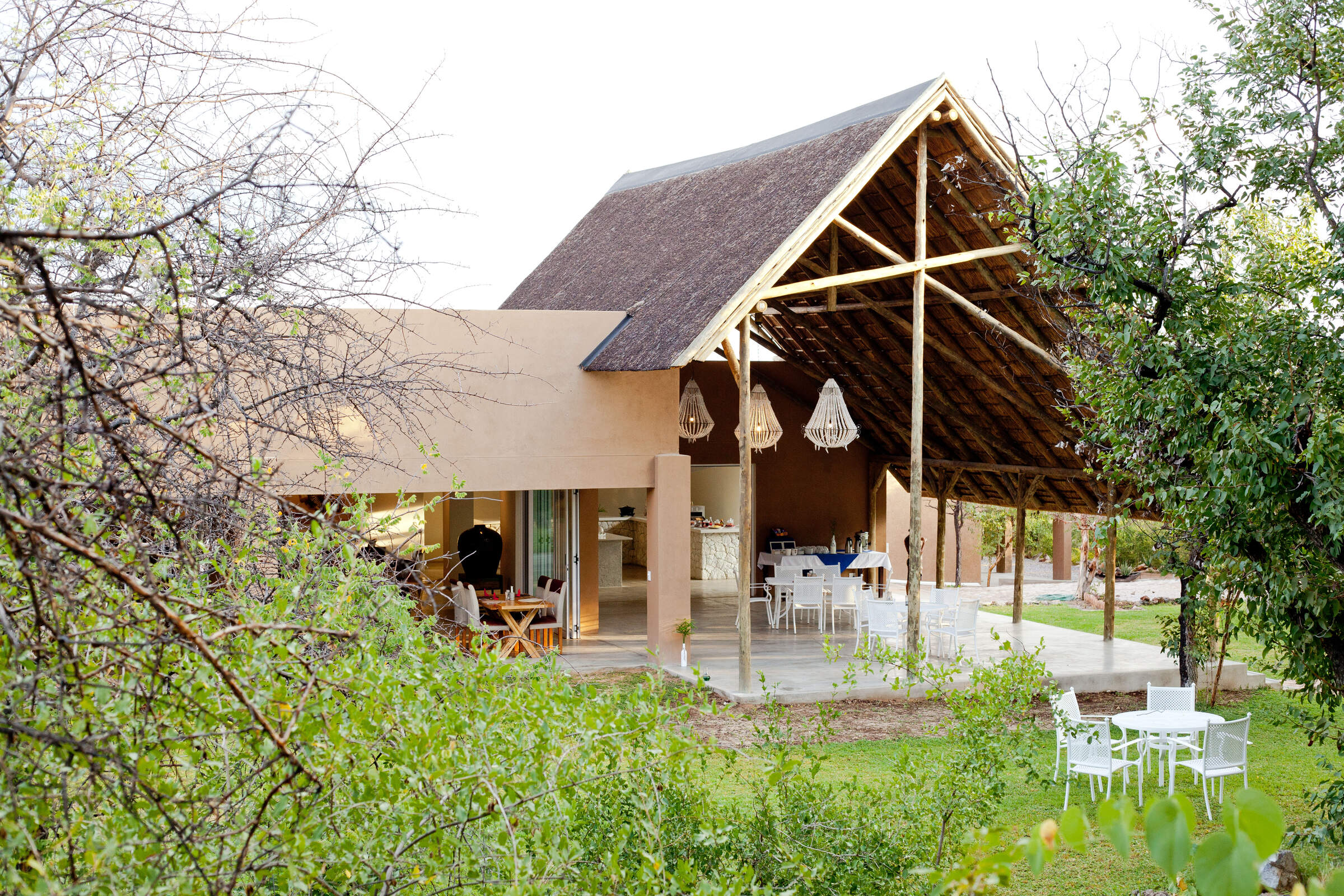
Toshari Lodge
Smart and professionally run, the hotel-style Toshari Lodge is well-placed for self-driving in Etosha National Park.
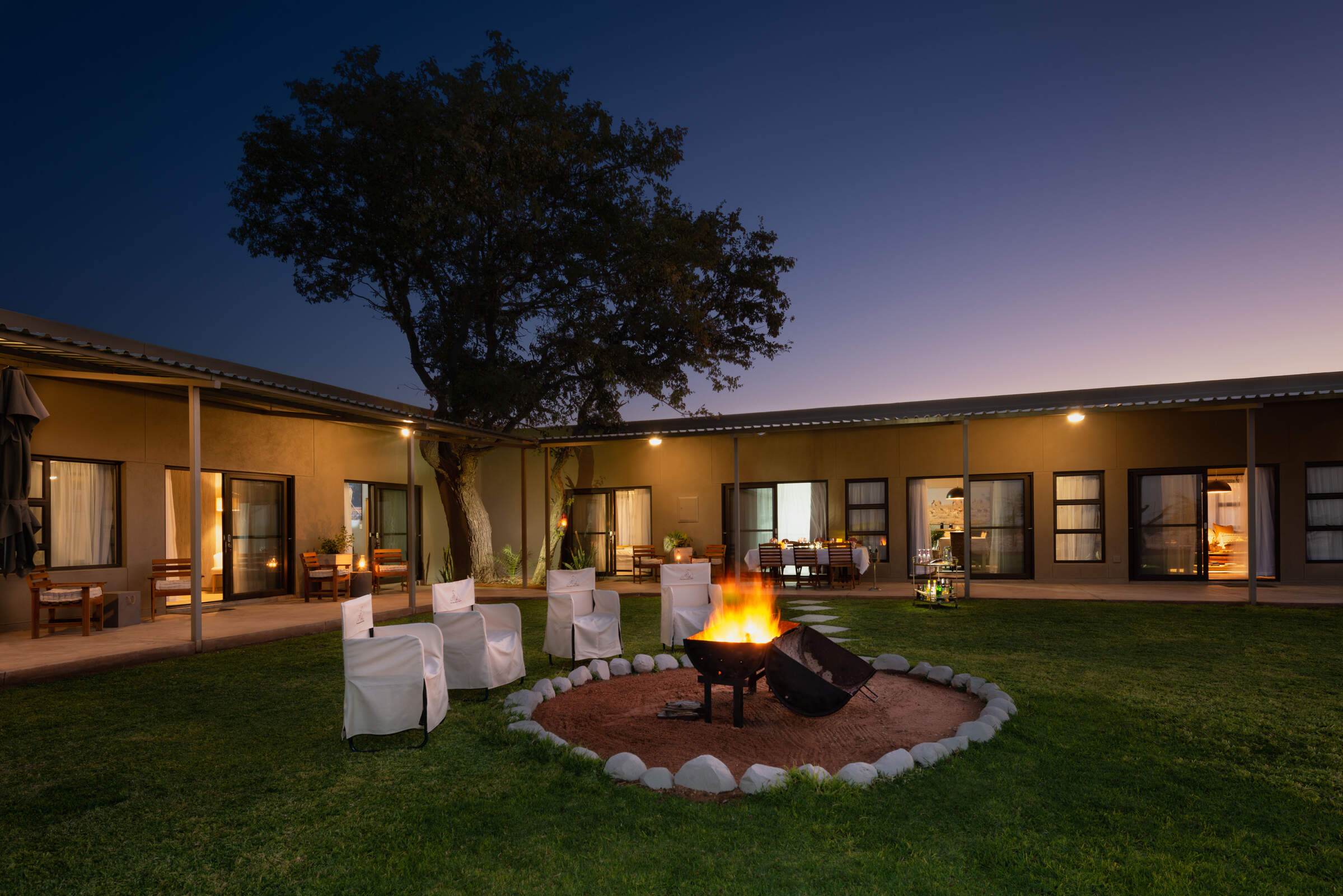
Safari House
The private Safari House on the Etosha Heights reserve is a great option families or friends travelling together.
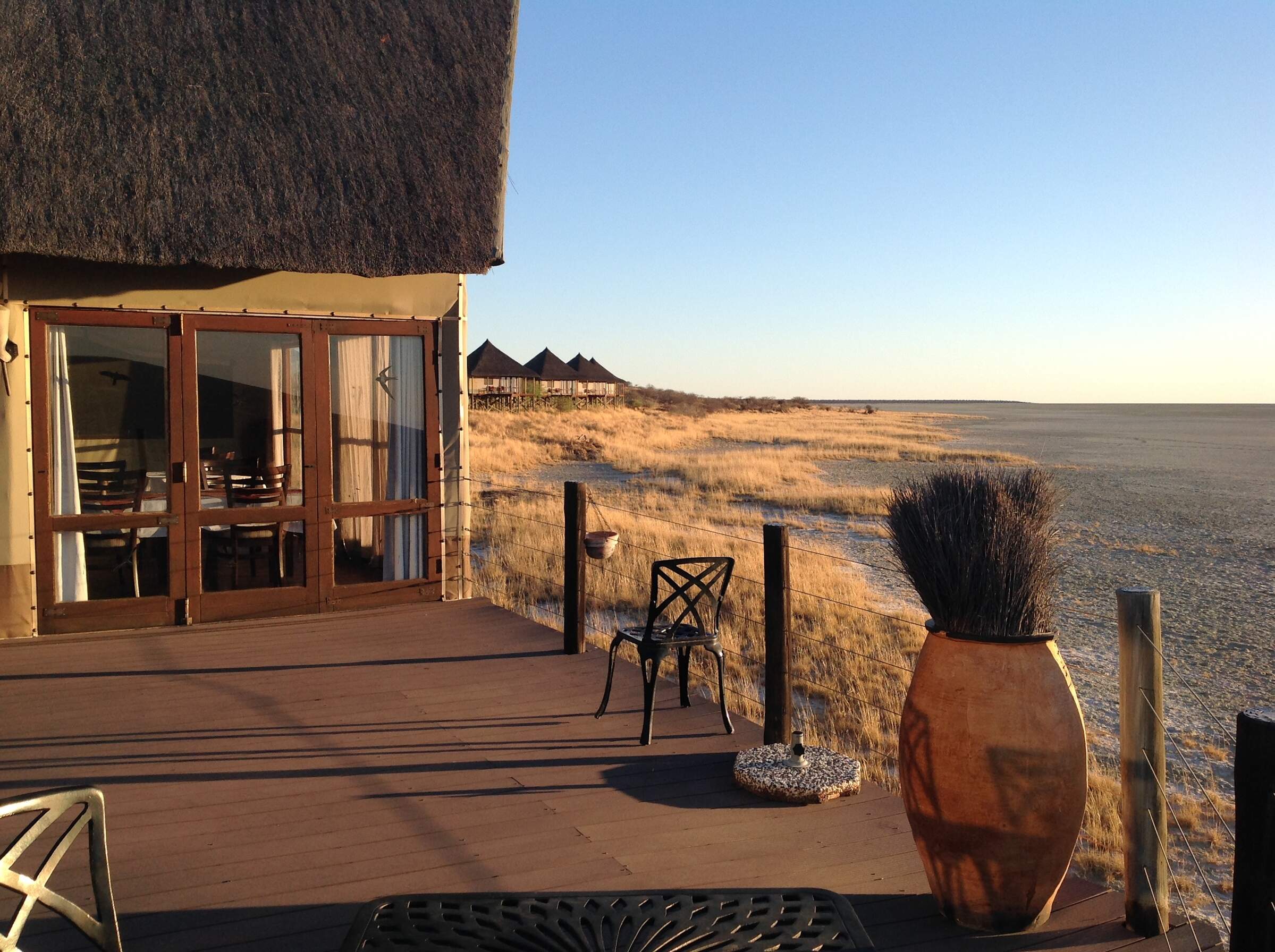
Onkoshi Camp
Onkoshi Camp is owned and run by Namibia Wildlife Resorts. Built on elevated wooden platforms it overlooks Etosha Pan.
When to go to Etosha National Park
Our month by month guide: What it's like to visit Onguma Camp Kala in Etosha National Park
Jan
Feb
Mar
Apr
May
Jun
Jul
Aug
Sep
Oct
Nov
Dec
Etosha National Park in January
January marks the start of Etosha's main rainy season. The Etosha Pan, usually a vast expanse of white clay, may partially fill with water in good rainy season, attracting flamingos and other migratory birds. The landscape transforms into a lush green oasis, providing ample food for wildlife. Many animals give birth during this time, offering chances to see newborns.
While game viewing can be challenging due to dispersed wildlife and thick vegetation, birdwatching is excellent. Migratory species arrive and birds display breeding plumage. The Okaukuejo and Halali waterholes remain active, though less crowded than in dry months. Visitors should be prepared for occasional thunderstorms and potentially muddy roads, especially around Fischer's Pan.
The vibrant greenery and the presence of young animals make this a fantastic time for photography.
- Variable weather: hot, dry or humid with rain
- Occasional localised thunderstorms in Etosha
- Many animals with young; spectacular birdlife
- Wildlife dispersed, harder to see in Etosha
- Fewer tourists; low rates at most lodges
Our view
This is not a great time to visit
Weather in January
Etosha National Park in February
February is typically Etosha's wettest month. The Etosha Pan may be partially filled, creating a spectacular sight and attracting numerous waterbirds, including flamingos. The landscape is vibrantly green, with many animals raising their young.
While game viewing can be more challenging due to the abundance of water and vegetation, patient observers can spot a variety of wildlife, and share their sightings with fewer other visitors. Birdwatching is excellent, with many species in breeding plumage. The Fairy Tale Forest near Okaukuejo is particularly lush during this time.
Visitors should be prepared for occasional thunderstorms and potentially challenging road conditions, especially in the eastern part of the park. The lush environment and the presence of young animals provide a unique opportunity to witness the park's life cycle.
- Variable weather with occasional thunderstorms
- Bush feels alive; birdlife at its peak in Etosha
- Wildlife in Etosha dispersed, harder to spot
- A variety of newborn and young wildlife to see
- Few tourists; lowest rates for accommodations
Our view
This is not a great time to visit
Weather in February
Etosha National Park in March
As Etosha's main rains taper off, March offers a mix of wet and dry days. The landscape remains green and alive, with insects and smaller animals more easily seen, and many birds and animals are finishing raising their young.
The Etosha Pan may still hold some water, attracting flamingos and other waterbirds. Game viewing improves as the month progresses and animals start to herd together at permanent water sources. The Okaukuejo, Halali, and Namutoni waterholes become increasingly active.
Birdwatching remains excellent, with many migrant species still around. The Dolomite Camp area in the west offers good chances to spot rarer antelope species like black-faced impala.
The transition from wet to dry conditions provides a fascinating glimpse into the park's seasonal changes.
- Weather variable; thunderstorms less frequent
- Animals well-fed after months of abundance
- Wildlife in Etosha still dispersed, harder to see
- Migrant birds prepare to leave the park
- Few visitors; rates often low at Etosha lodges
Our view
A good time to visit, with pros & cons
Weather in March
Etosha National Park in April
April typically sees dry weather dominating in Etosha, with decreasing chances of rain. The landscape remains relatively green, and animals are in excellent condition with shiny coats. Increasing numbers of elephants seen as the herds begin to use the permanent water sources. The Okaukuejo waterhole becomes particularly active, especially in the evenings.
Photographers benefit from clear air and lush, green backdrop. Night drives from camps like Halali offer chances to see nocturnal animals. Birdwatching remains good, though some migratory species begin to depart, and the Fischer's Pan area can still be productive for waterbirds if there's residual water from the rainy season.
The shift towards drier conditions improves the chances of wildlife sightings.
- Becoming drier and cooler, especially at night
- Few visitors except around Easter; low rates
- Wildlife in Etosha still relatively spread out
- Migrant birds have largely left the park
- Fresh air and often green landscapes in Etosha
Our view
A good time to visit, with pros & cons
Weather in April
Etosha National Park in May
May marks the transition to Etosha's dry season. The landscape starts to dry out, but may still retain some greenery. Wildlife increasingly gathers around permanent water sources, making game viewing more predictable. The Okaukuejo, Halali, and Namutoni waterholes become excellent spots for animal observation – especially when floodlit after dark. Night drives offer opportunities to see nocturnal species like leopards and owls.
The Etosha Pan is usually dry, creating a stark, shimmering backdrop for photography. Birdwatching remains good, with 340 different species recorded in the park. The western part of the park, accessible from Dolomite Camp, offers chances to see rarer species like black rhino in a less frequently explored environment. The dry season's onset brings a new rhythm to the park's wildlife dynamics.
- Lovely weather: dry, warm days & cool nights
- Etosha drying out; landscapes still partly green
- Fantastic air clarity; ideal for photography
- Visitor numbers low; lodge rates still low
- Wildlife starting to gather at Etosha waterholes
Our view
A very good time to visit
Weather in May
Etosha National Park in June
June brings cooler temperatures with clear skies to Etosha. The landscape is drying out, encouraging animals like elephants, rhino and giraffe to waterholes. This makes for excellent game viewing, especially at popular spots like Okaukuejo and Halali. Night drives on private Etosha reserves, like Ongava, are particularly productive.
The dry Etosha Pan creates mirages and a unique backdrop for photography, perhaps a lone ostrich crossing the stark salt crust. Birdwatching remains rewarding, with bright colours standing out in drier vegetation. The Namutoni area, with its fort, provides a mix of wildlife viewing and historical interest.
Cooler temperatures making walking safaris enjoyable in Etosha’s adjacent wildlife reserves, like Etosha Heights.
- Clear days, cold nights in Etosha National Park
- Great air quality; perfect for photographers
- Moderate lodge rates; shoulder season begins
- Wildlife gravitates to Etosha's waterholes
- Some greenery remains in parts of the park
Our view
A very good time to visit
Weather in June
Etosha National Park in July
July is prime time for wildlife viewing in Etosha as animals, in particular predators, are more active later in cool mornings and earlier in the afternoons. The dry landscape concentrates animals around waterholes, making for predictable and spectacular sightings. The Okaukuejo waterhole is particularly active, especially at night when black rhinos often visit and jostle for position with elephants.
The stark white Etosha Pan creates a unique backdrop for photography, with heat mirages shimmering on the horizon.
The dry season's peak offers unparalleled wildlife viewing opportunities. Game drives along the southern edge of the pan offer excellent opportunities to see large herds of zebra, wildebeest, and antelope. Birdwatching is rewarding around waterholes, with species like eagles and vultures frequently sighted.
- Dry days, crisp nights; excellent for stargazing
- European holidays begin; more families visit
- Peak season; high rates, lodges often full
- Fantastic wildlife watching
- Animals concentrate around Etosha waterholes
Our view
A very good time to visit
Weather in July
Etosha National Park in August
August is the height of the dry season in Etosha, offering excellent wildlife viewing opportunities. Animals concentrate around waterholes, with a variety of predators and prey often seen at any one time. Night viewing at the more secluded yet floodlit waterhole at Halali is often rewarded with sightings of shyer leopard and porcupine.
The dry season's intensity brings wildlife into sharp focus. The open plains along the edge of the Etosha Pan are good for seeing large herds of zebra and wildebeest, and often cheetah too. Predators often lie in wait for their prey near waterholes offering sightings of hunts to patient game viewers.
Birdwatching remains rewarding, with raptors like bateleur and martial eagles frequently sighted.
- Dry days, cold nights; clear skies in Etosha
- Busy by Namibian standards; family rooms full
- Peak season; high rates, advanced booking needed
- Excellent wildlife viewing in Etosha National Park
- Large herds gather at Etosha's waterholes
Our view
Fantastic: the very best time to visit
Weather in August
Etosha National Park in September
September offers peak wildlife viewing in Etosha. The extreme dry conditions concentrate animals around waterholes, making for spectacular sightings of multiple species. The Okaukuejo waterhole is particularly active, with elephants, rhinos, and lions frequently visiting.
The last months of the dry season showcases the park's wildlife at its most concentrated. The stark landscape of the dry Etosha Pan creates dramatic backdrops for photography. Game drives along the pan's edge offer chances to see large herds of zebra, springbok, and oryx as well as lion prides and cheetah. The western part of the park, accessible from Dolomite Camp, often provides a more exclusive safari experience with good rhino sightings. Night drives on adjacent private reserves like Hobatere offer opportunities to see nocturnal animals such as genets and aardwolves.
Birdwatching is excellent, with species standing out clearly in the sparse vegetation.
- One of the best months for Etosha wildlife viewing
- Warm days, cold nights; temperatures rising
- Colourful birds stand out against a starker backdrop
- Etosha's waterholes teem with diverse wildlife
- High season; book Etosha accommodations early
Our view
Fantastic: the very best time to visit
Weather in September
Etosha National Park in October
October is typically Etosha's hottest and driest month, offering excellent wildlife viewing. The intense heat and dry conditions heighten the drama of wildlife interactions.
Animals concentrate heavily around waterholes, with spectacular sightings common at Okaukuejo, Halali, and other permanent water sources. Patient photographers spending time at waterholes are richly rewarded. Large herds of zebra, wildebeest, and various antelope species can be seen along the pan's southern edge. Predator sightings, including lions and cheetahs, are frequent as they target gathered and weakened prey. Thinning vegetation at Namutoni makes it easier to spot the dimunitive Damara dik dik – Namibia’s smallest antelope.
Birdwatching remains rewarding, with raptors and colourful rollers often spotted.
- Peak wildlife-viewing month in Etosha National Park
- Hot and dry; Etosha feels like a desert
- Air can be hazy with dust in some areas
- Peak time; expect high season rates in Etosha
- Etosha lodges often full, especially early October
Our view
A very good time to visit
Weather in October
Etosha National Park in November
November marks the transition to Etosha's rainy season, bringing change to the landscape and wildlife behaviour. Early rains may green the vegetation, dispersing some wildlife from waterholes. However, game viewing remains good, especially around permanent water sources like Okaukuejo and Halali’s floodlit waterholes.
The first rains can create dramatic scenes as animals celebrate the water's arrival, with plains game often giving birth. Predators often give birth at this time too, to coincide with the time of plenty. Migratory birds begin to return, and birds take to the skies in spectacular aerial shows as they catch more active insects.
Seasonal wildflowers and dramatic, thundery skies add interest to photographic compositions. Summer rains bring reptiles such as tortoises and chameleons out into the open. The onset of rains brings a refreshing change to the park's ecosystem.
- Variable month in Etosha, depending on rains
- If rain comes, explosion of vegetation and life
- Baby animals often born around mid-month
- Shoulder season; mid-range rates offer value
- Showers more likely later in the month in Etosha
Our view
A good time to visit, with pros & cons
Weather in November
Etosha National Park in December
December is often a drier month before January sees the main rainy season begin. The landscape begins to show green from November's rain and the odd rainshower in December. Many animals have young, so there’s the chance to watch frolicking calfs and lambs.
The combination of rainfall and sunshine rejuvenates the park's landscapes and wildlife. While wildlife disperses away from the waterholes with increased water availability, game viewing remains good, especially on the open plains along the southern edge of Etosha Pan. Birdwatching is excellent, with many species in breeding plumage and displaying for mates as well as migrant species arriving.
Visitors should be prepared for occasional thunderstorms and potentially muddy roads, especially in the eastern part of the park.
- Hot, sometimes humid with cooling showers
- Landscapes green where rain has fallen in Etosha
- New life and energy in the park's ecosystem
- Excellent for birdwatchers in Etosha
- Larger animals may be harder to spot
Our view
This is not a great time to visit
Weather in December

Looking for inspiration on where to travel next?
Visit our trip chooser to explore your options and find inspiration for your perfect African adventure
Inspire me